

Max Davies
2026 Toyota HiAce review
3 Hours Ago
The large SUV is today's equivalent of the family bus. But does the characterful Hyundai Staria have the ingredients to help change this dynamic?

Senior Contributor
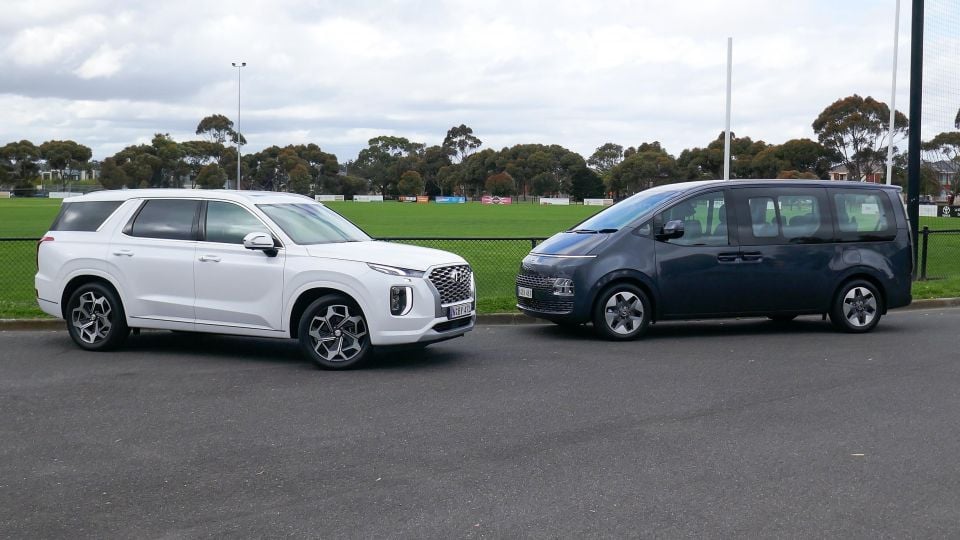

Senior Contributor
This is not your typical comparison, really. We generally battle similar vehicles from different brands, not different cars from the same brand.
But there’s a wider question in here around people-movers opposed to large SUVs.
Principally, while everyone seems to want the latter – especially true for the tough, American-style Palisade – perhaps some ought to swallow their pride and get the former?
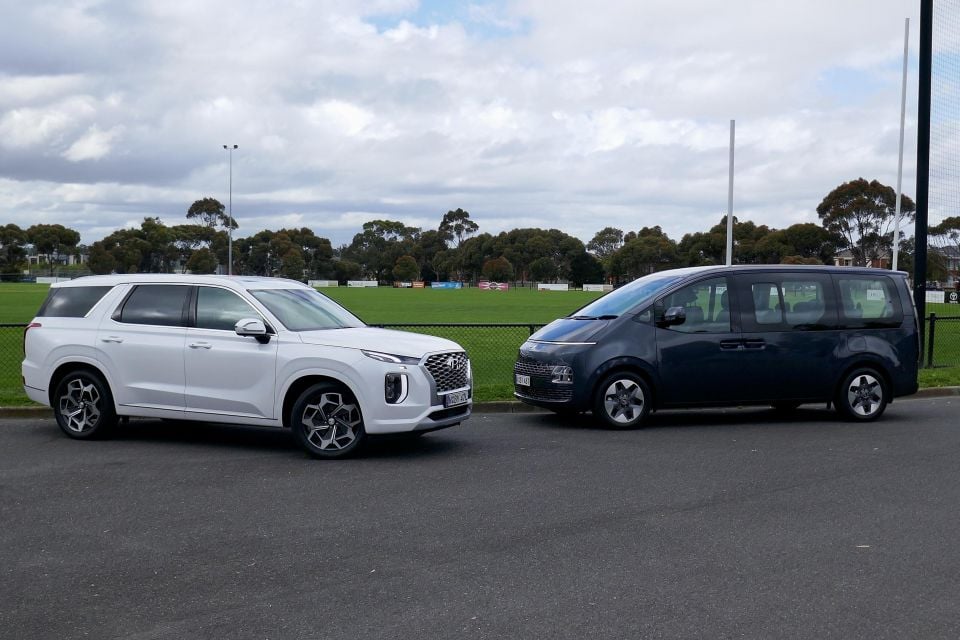
Especially considering this Staria doesn’t look like your average minivan. While the related Kia Carnival shoots for an SUV-MPV hybrid design, the Staria looks like a heavily windowed spaceship.
It gives me ’90s Toyota Tarago vibes. You?
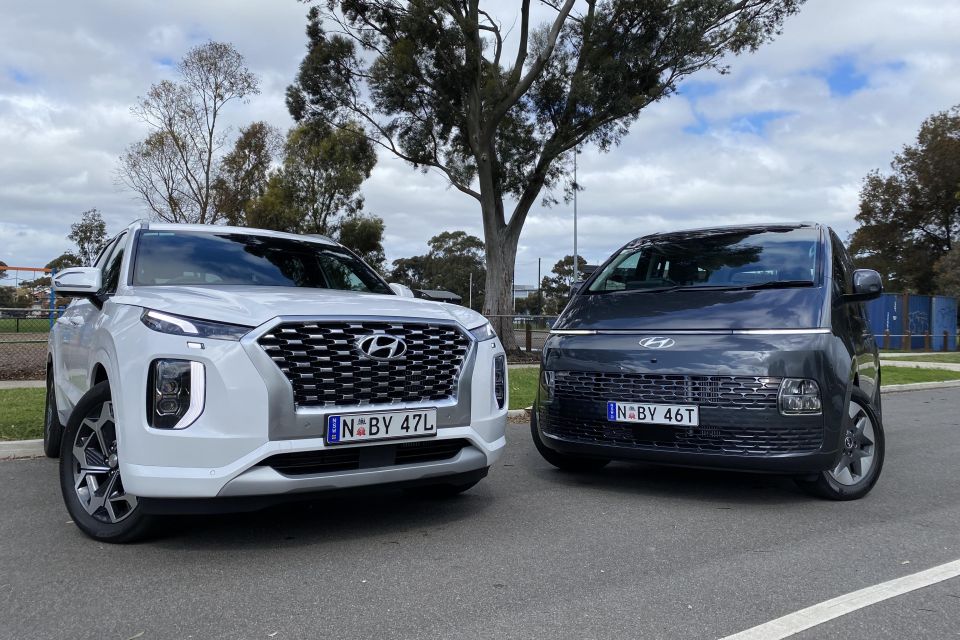
Consider Hyundai’s press release on the vehicle, which proclaims the Staria as a “new frontier for people movers… not just cool for a people mover, it’s cool full stop”.
Hyundai practically set this test up with its external comms…
These two vehicles are rather similar below their radically different metal bodies. Unlike the ancient iMax it replaced, the Staria isn’t a noisy commercial van with a family’s worth of seats inside.
We drove both models in flagship Highlander spec with diesel engines and all-wheel drive.
The Staria Highlander in this incarnation wears a retail price of $66,500 before dealer delivery costs and state taxes, against the Palisade’s $75,000 sticker.
So the big bus is actually $8500 cheaper than the SUV.
There’s not a hell of a lot different on the spec sheet. Outside both vehicles come with full-size alloy spare wheels, dual sunroofs, LED headlights, proximity key access, and powered tailgates.
The Palisade’s 20-inch wheels are blingier than the Staria’s 18-inch wheels, but the Staria has powered side doors that can be opened with the key fob – unlike the Palisade.
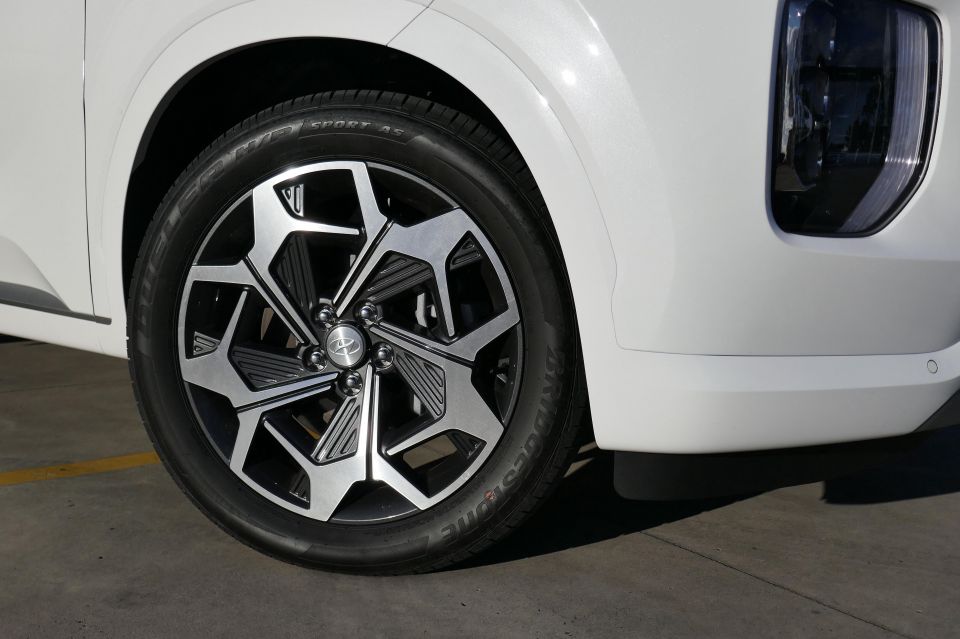
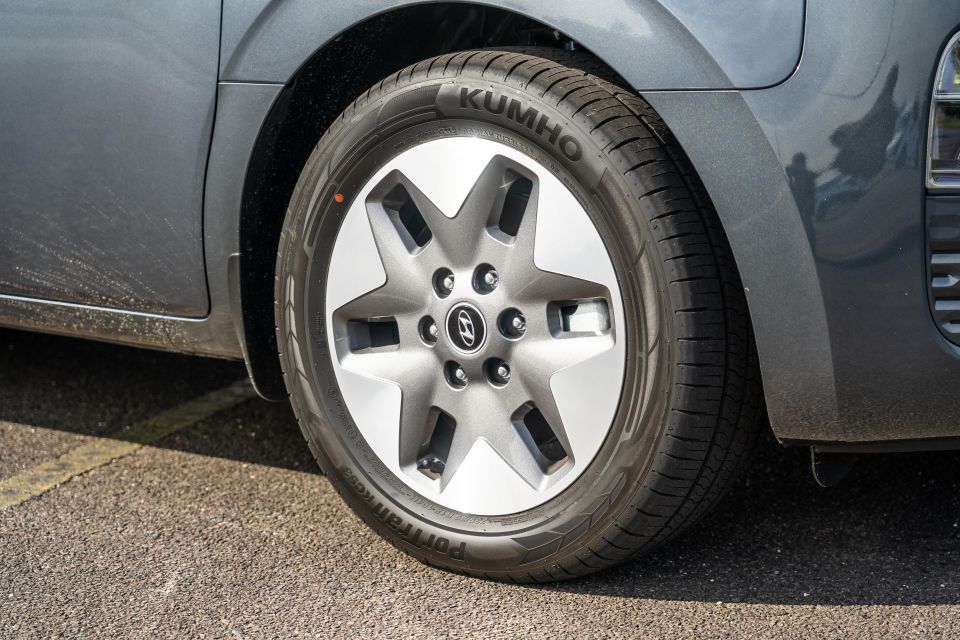
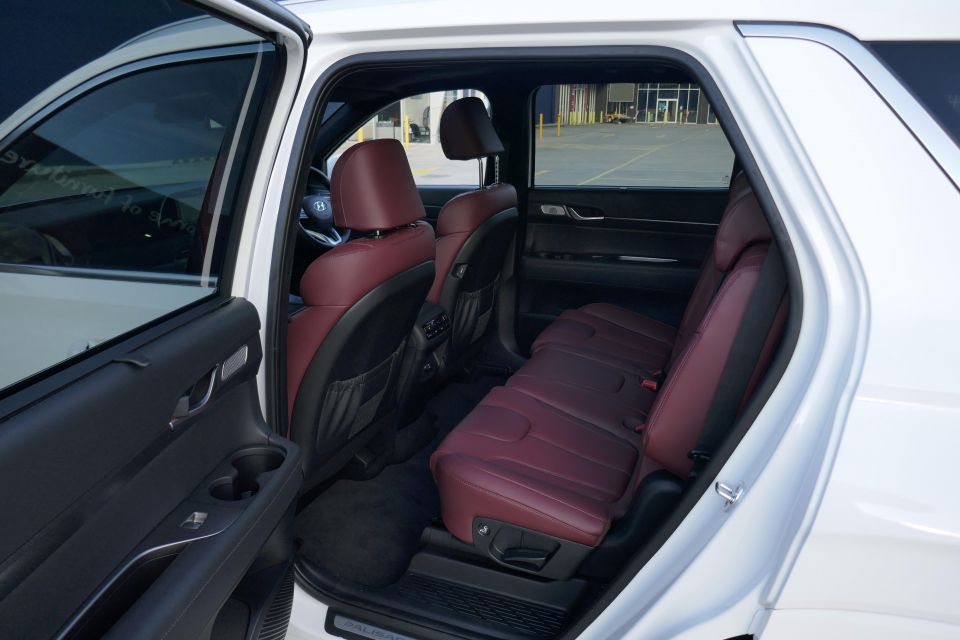
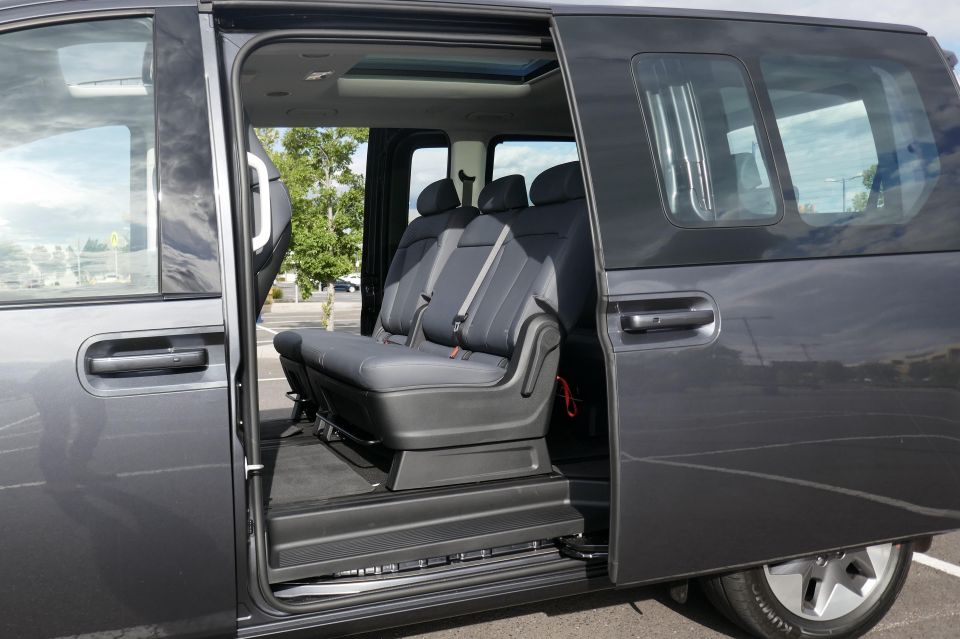
The styled Palisade also has the more interesting colour palette (Rainforest Green, Sierra Burgundy, Moonlight Mica, Steel Graphite, Abyss Black or White Cream) than the slabby Staria (Gaia Brown, Olivine Grey, and the same blue, black and graphite as the Palisade).
Inside each has heated and cooled front seats with powered driver-side movement, a 10.25-inch touchscreen, sat-nav, wired smartphone mirroring, two Bluetooth connections, digital radio, wireless phone chargers, front and rear climate control zones, and a 360 camera view.
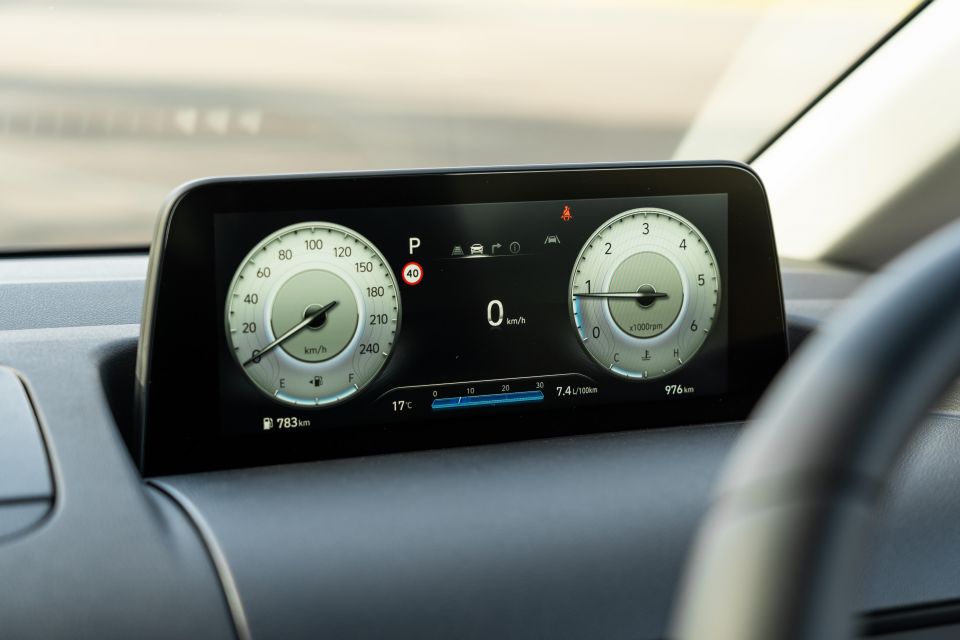
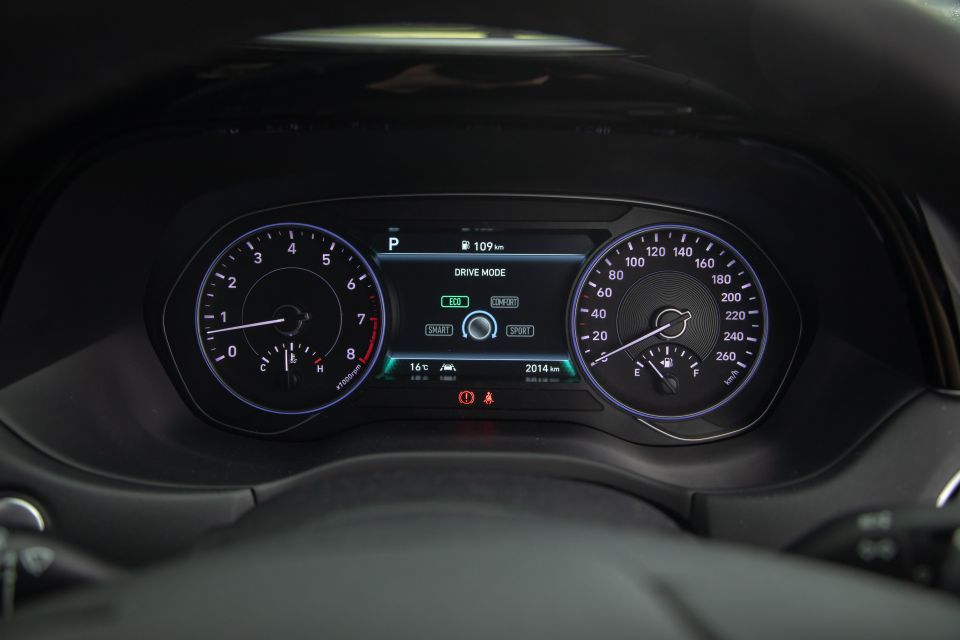
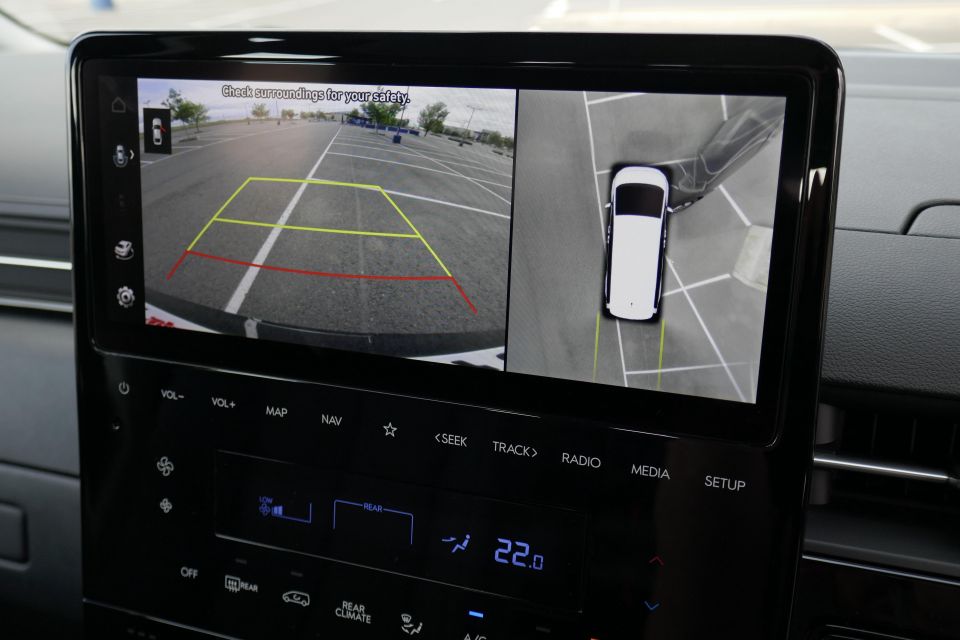
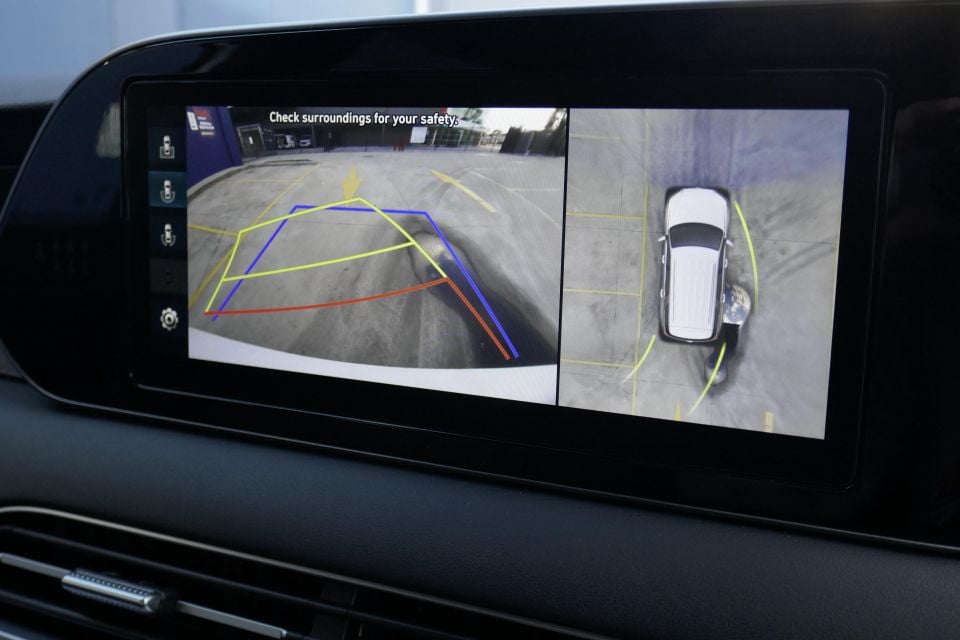
The Palisade has higher-grade Nappa leather seats and driver’s side memory presets, six more speakers (12 versus six) and a head-up display. The Staria has a fully digital instrument cluster, though.
| Palisade | Staria | |
|---|---|---|
| Wheels | 20″ | 18″ |
| Spare | F/S alloy | F/S alloy |
| Sunroof | Dual | Dual |
| Headlights | LED | LED |
| Proximity key | Standard | Standard |
| Tailgate | Powered | Powered |
| Seat trim | Nappa leather | Leather appointed |
| Front seat functions | Heated/ventilated | Heated/ventilated |
| Driver seat movement | Powered, memory | Powered |
| Touchscreen | 10.25-inch | 10.25-inch |
| Sat-nav | Standard | Standard |
| Bluetooth connections | 2 | 2 |
| Apple CarPlay | Standard | Standard |
| Android Auto | Standard | Standard |
| DAB | Standard | Standard |
| Audio system | 12 speaker | 6 speaker |
| Wireless charger | Standard | Standard |
| A/C type | Climate front and rear zones | Climate front and rear zones |
| HUD | Standard | No |
| Camera view | 360-degree | 360-degree |
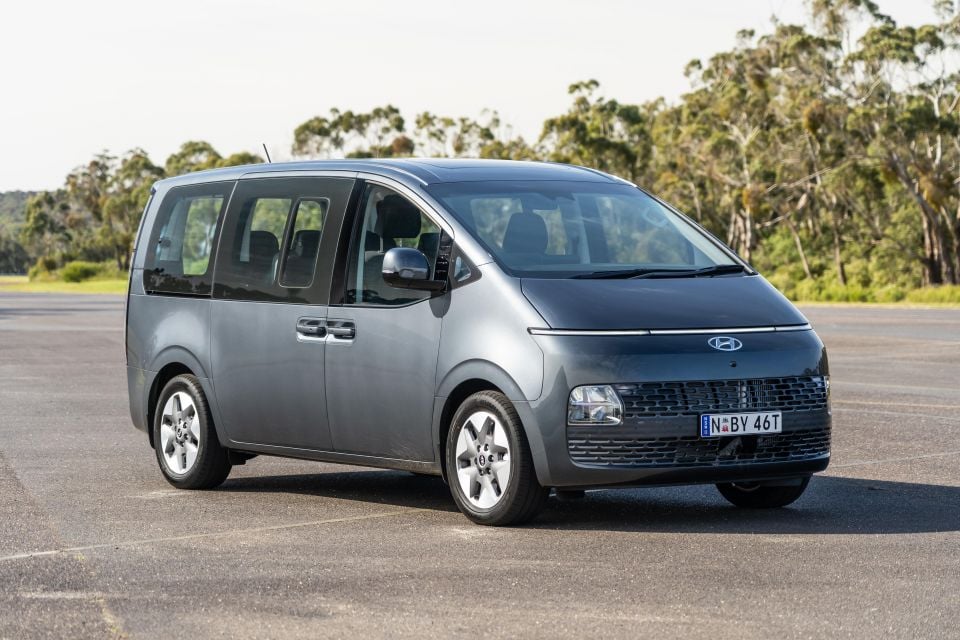
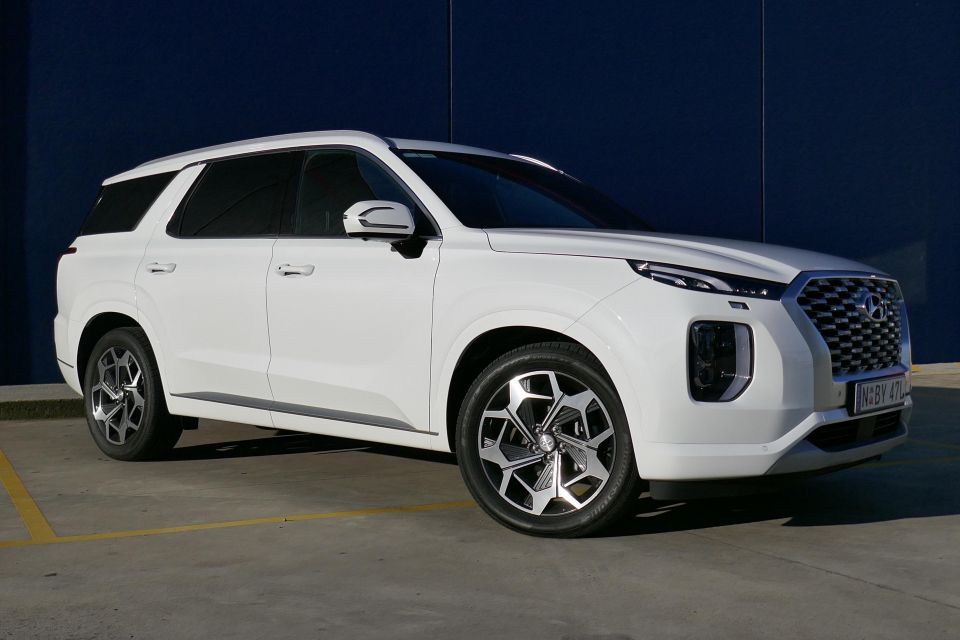
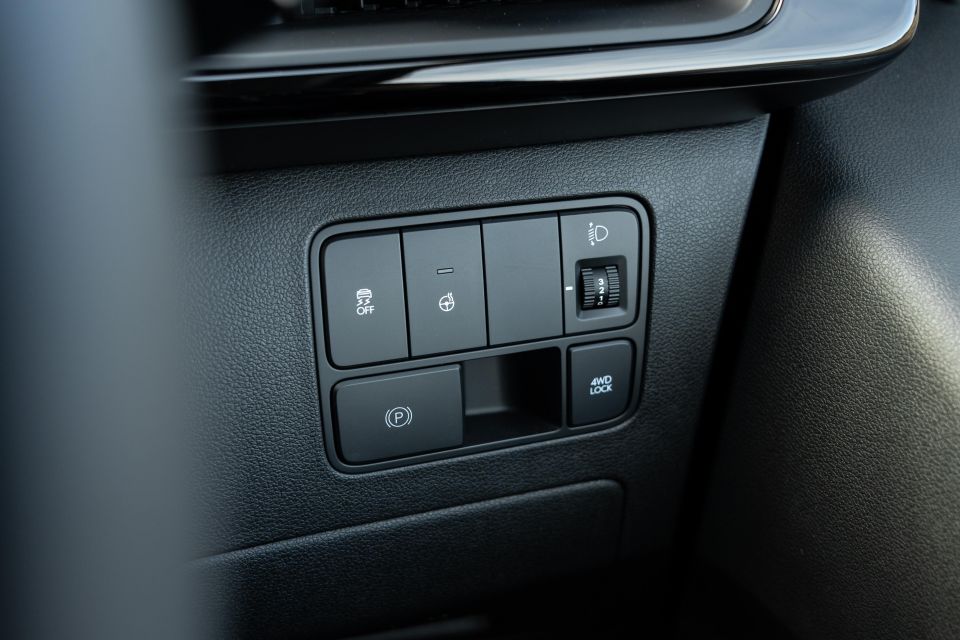
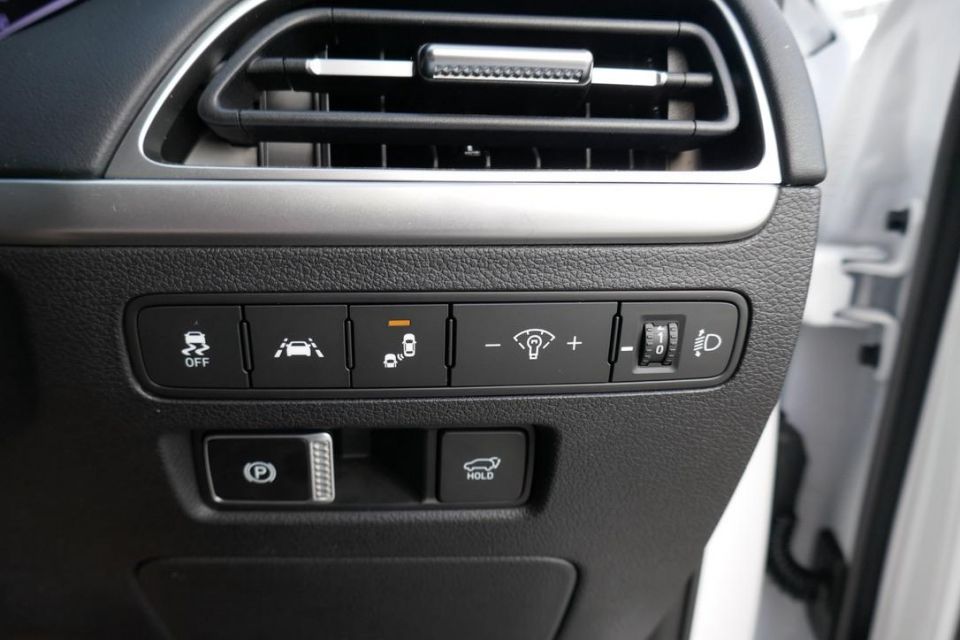
Both the Palisade and Staria have dual front, front-side, and curtain airbags that stretch across all three rows for a total of six. The Staria alone adds a front-centre airbag for head clashes.
Active safety features in common include autonomous emergency braking (AEB) designed to work across a gamut of situations, active lane-keeping and centring aids, active side and rear-side collision mitigation, and active cruise control.
Two cool features in both are the leading-vehicle start alert function that beeps if the car ahead departs from standstill and you don’t follow, and a safe exist assist system that chimes and activates child locks if a cyclist or car is passing your parked vehicle in a parallel direction.
You’ll note the odd discrepancy in child-seat attachment points. The Palisade has them in two rows, the Staria just the one.
Disappointingly, neither vehicle carries an ANCAP crash rating as yet. Hopefully that will be rectified soon. North America’s IIHS awarded the left-hand drive Palisade its ‘Top Pick’ rating.
| Palisade | Staria | |
|---|---|---|
| Airbags | 6 | 7 |
| ISOFIX | 3 | 2 |
| Top tethers | 5 | 2 |
| Parking sensors | Front & rear | Front & rear |
| AEB system | Camera & radar | Camera & radar |
| AEB detection | Cars & vulnerable road users | Cars & vulnerable road users |
| AEB functions | Urban & inter-urban | Urban & inter-urban |
| Lane-keeping | Active with steering | Active with steering |
| Lane-centring | Standard | Standard |
| Blind-spot screen in instruments | Standard | Standard |
| Blind-spot system | Active with steering | Active with steering |
| Rear cross-traffic system | Active with braking | Active with braking |
| Lead-vehicle departure alert | Standard | Standard |
| Exit assist & side detection | Chimes & child locks engaged | Chimes & child locks engaged |
| Cruise control | Active, stop/go | Active, stop/go |
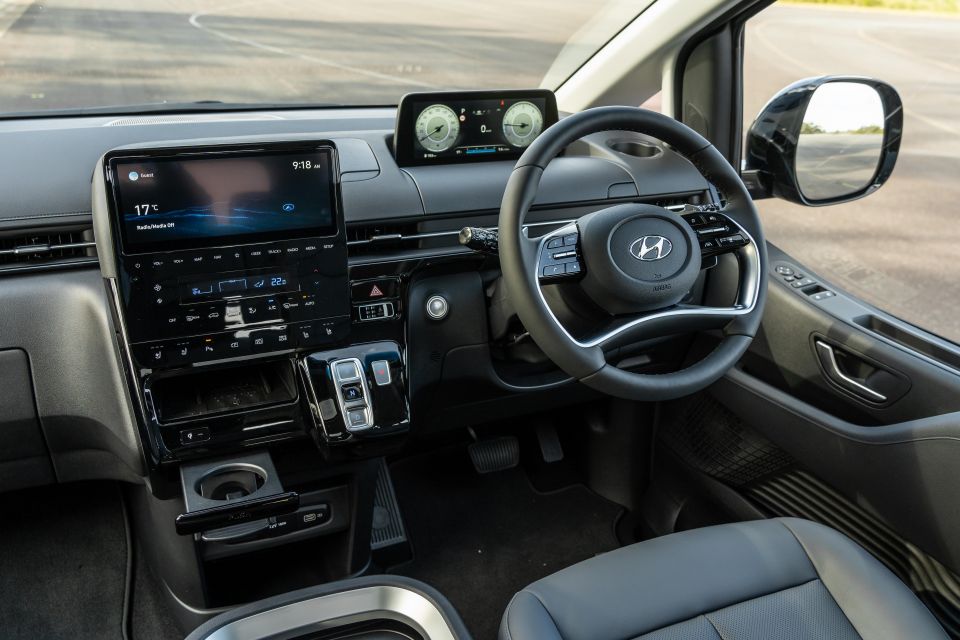
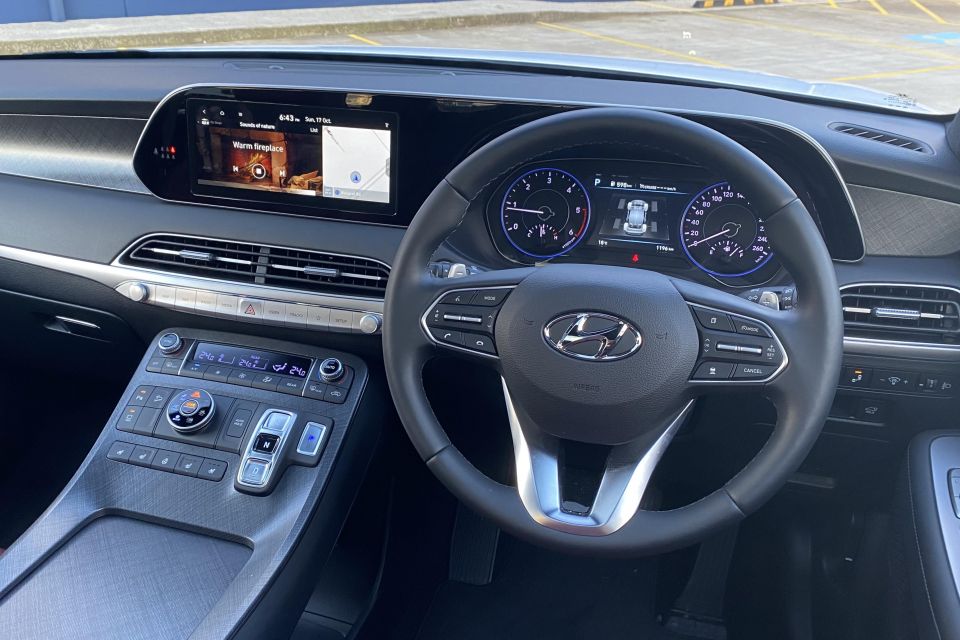
Palisade
Supple and supportive leather seats with heating, cooling and memory? Check. A commanding road view assisted by a head-up display projecting on the windscreen? Naturally. Two sunroofs and large side windows to enhance the feeling of space? You’ve got it.
The Palisade enhances this feeling of space and welcoming comfort with a bold colour palette (you can also get beige or black leather) and tasteful materials with the exception of the polarising grey trim along the transmission tunnel. The black felt headliner is lovely.
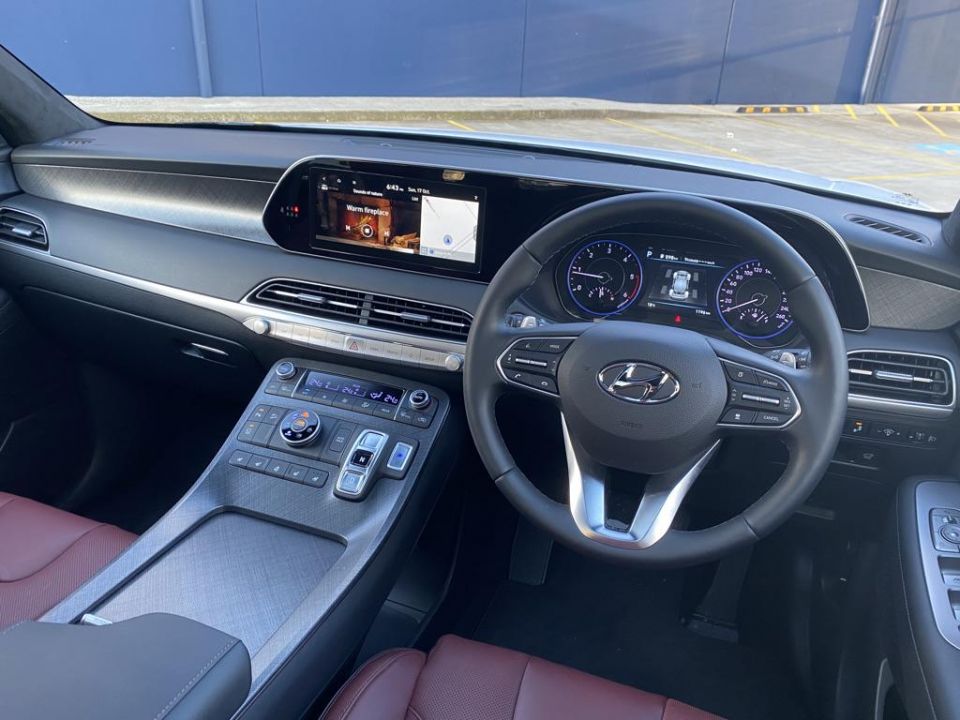
There are plenty of chunky helpful buttons along the centre tunnel controlling your seat and steering wheel temperatures, ventilation system and drive modes, however the shift-by-wire transmission buttons are an acquired taste. The Staria has the same setup.
There’a a generous closing cubby between the front occupants with cupholders, alongside a conventional centre console and a hidden storage section below the floating centre tunnel top. Sensible, practical, and well thought-out overall.
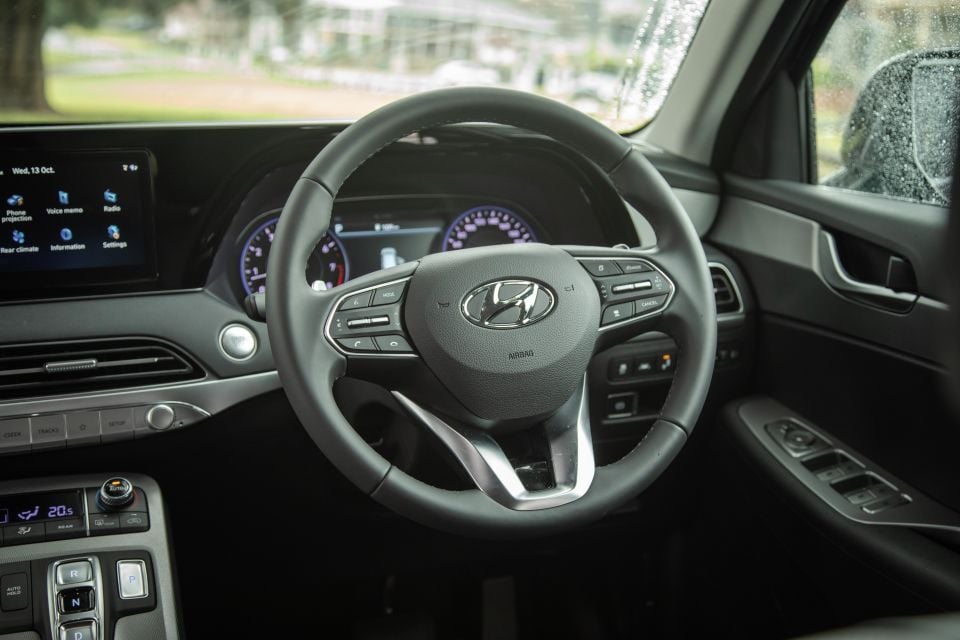
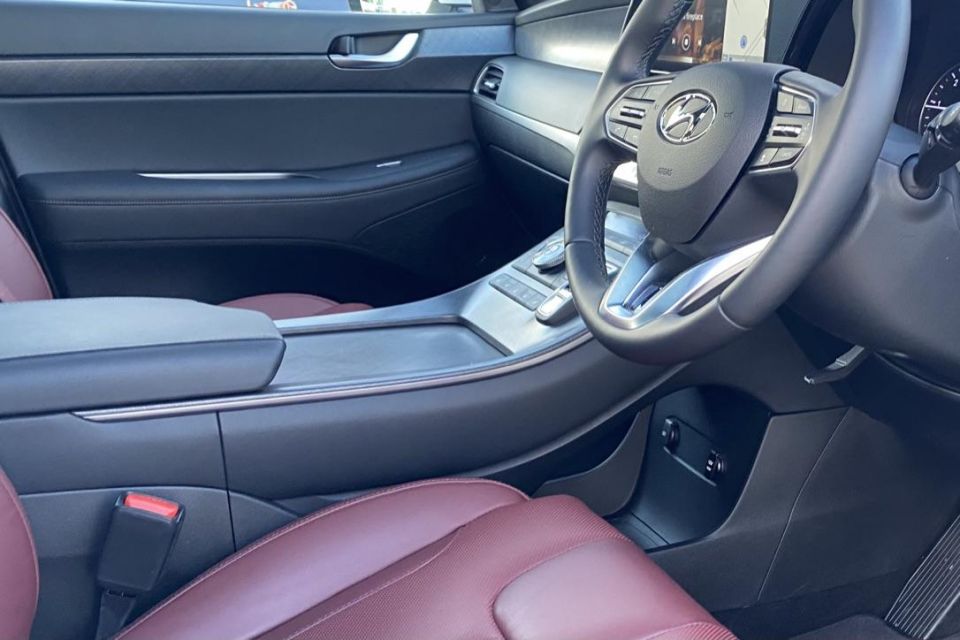
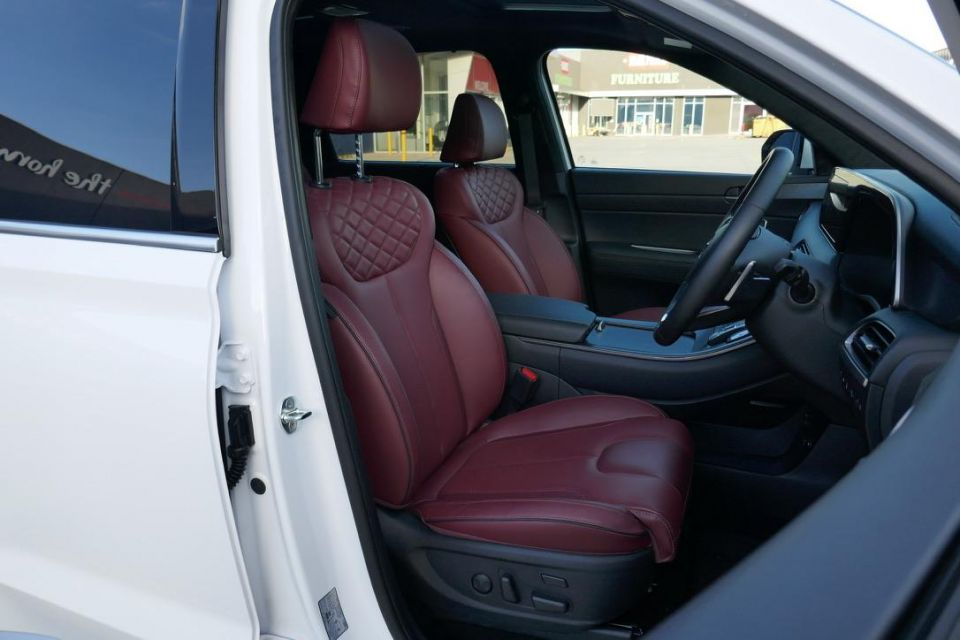
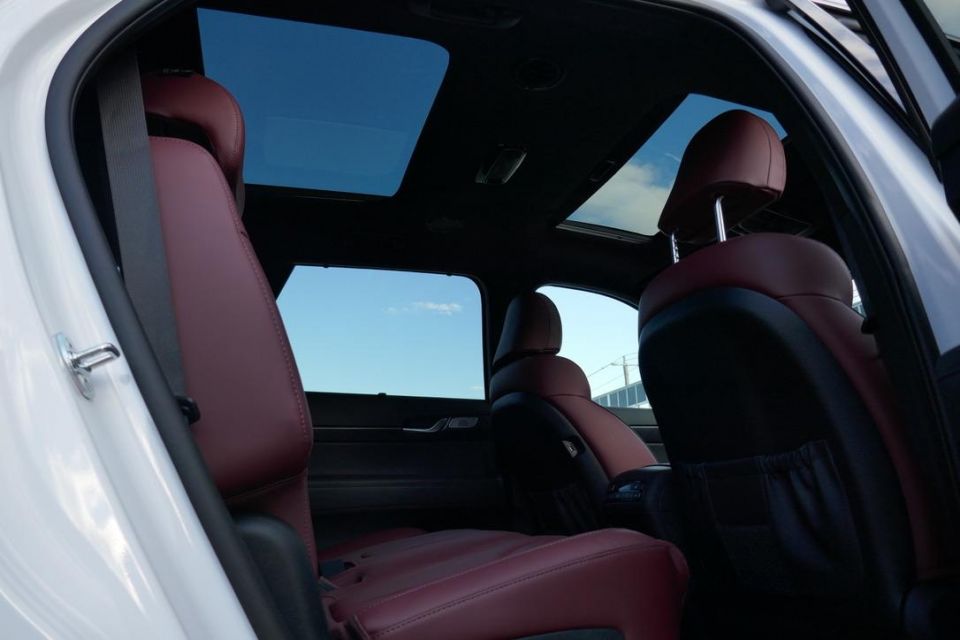
The large centre touchscreen runs the same infotainment system as the Staria, but in the Palisade is paired up to a greatly superior sound system. Not only is the touchscreen large, but it’s very responsive to inputs and light on lag.
You have wired phone mirroring, split-screen maps, an ambient sound program called Sounds of Nature (see screen in the gallery just below), and a sharp surround-view camera. Two great features are the Driver Talk in-car intercom and the in-roof wide-view cabin mirror.
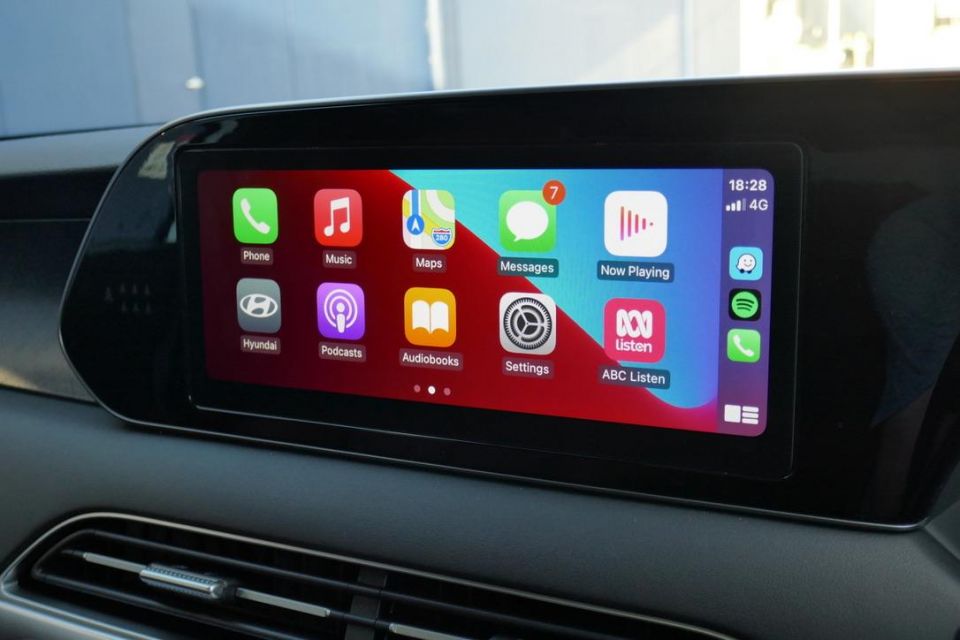
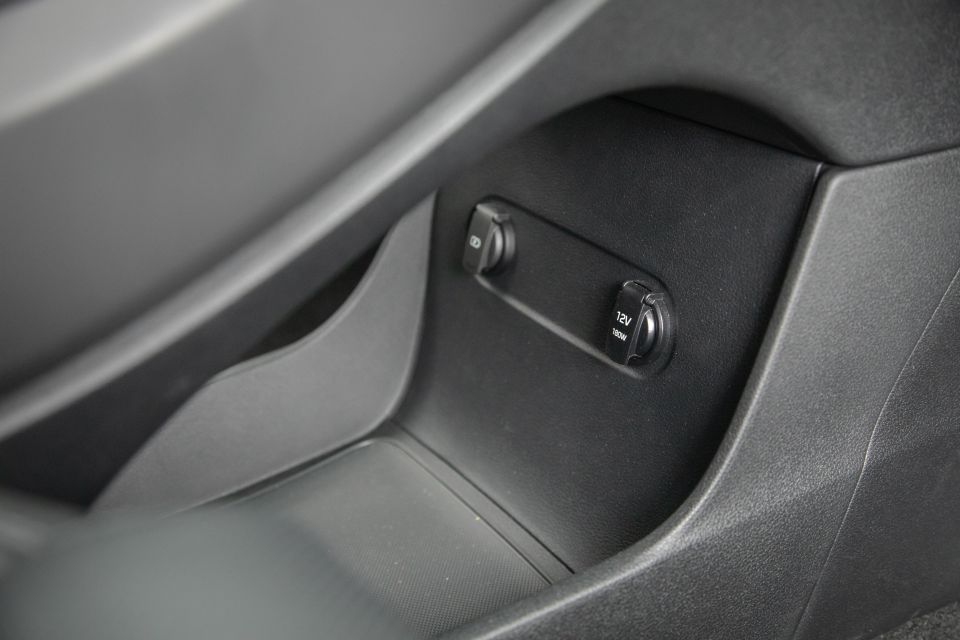
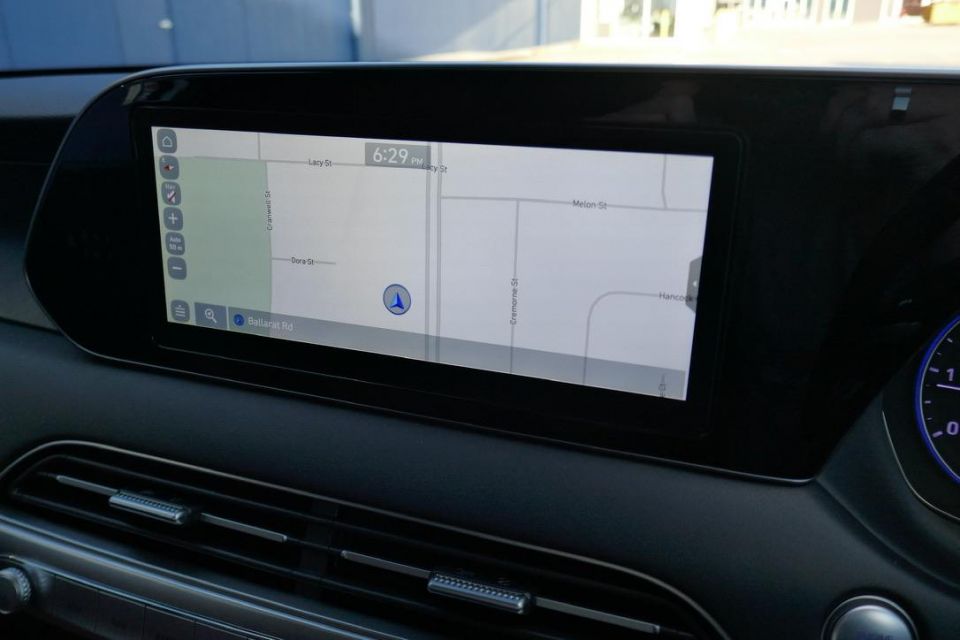

Storage options are substantial: my favourite stat being the car’s 16 cupholders. Everyone can have two drinks, guys! The below picture of the back door demonstrates the car’s user-friendliness.
You can get the Palisade as a seven-seater with middle-row captains chairs, but ours was the eight-seater (2-3-3). Middle-seat occupants get their own temperature controls and vents, USBs, sunroof, pull-up blinds, and flip-down armrest with cupholders.


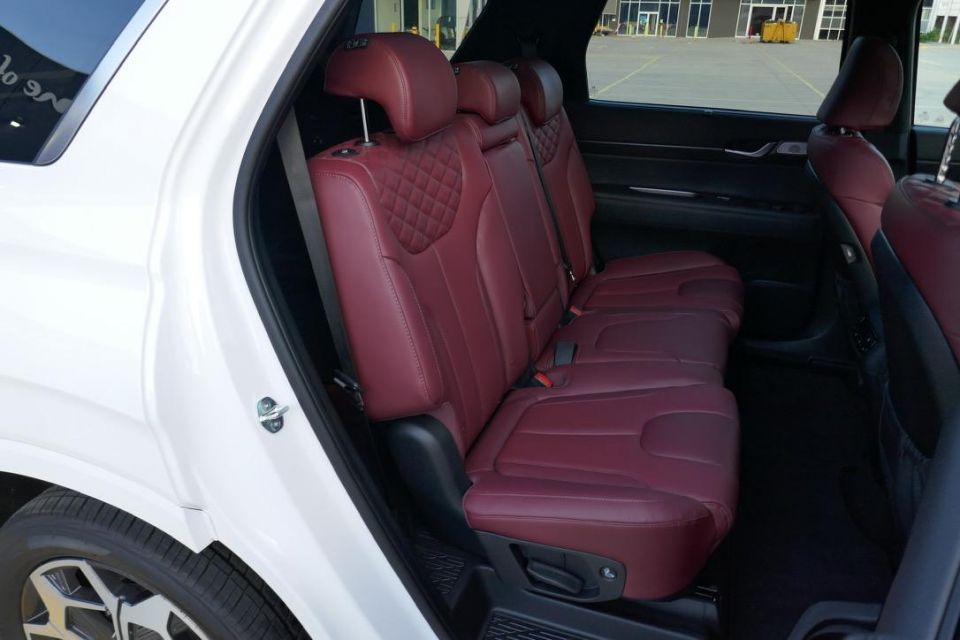
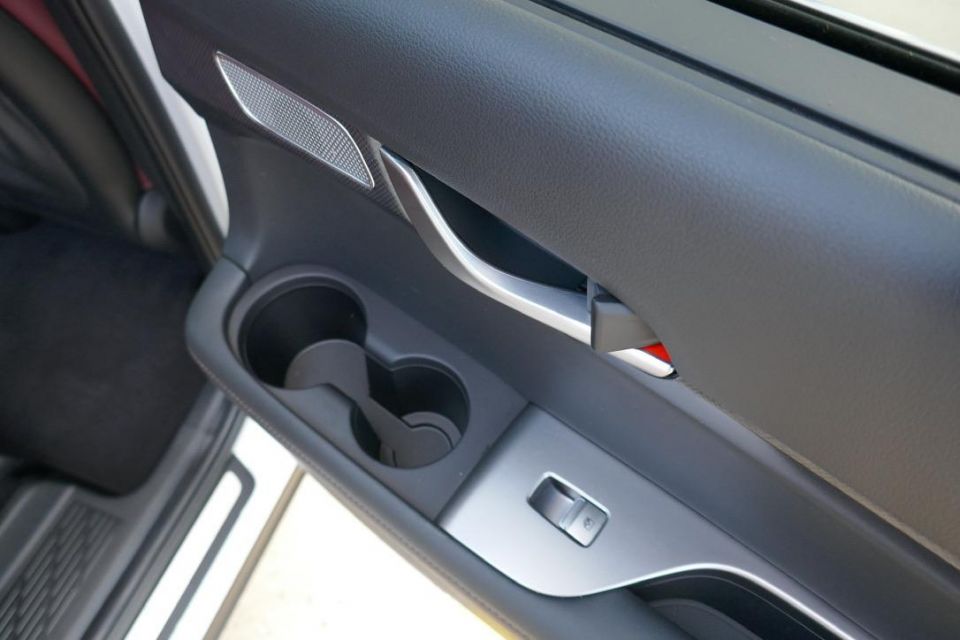
My 194cm self had acceptable headroom and legroom behind my own seating position, so your kids will have acres of room. The seats both slide and recline. Walk to the kerbside and a single-touch button tilts and slides the 60 per cent bench portion to open access to the third seat row.
Entry to this third row is easier than in the Santa Fe, and while there isn’t vast space there’s room for three kids or two (reluctant) teenagers especially with the centre row slid forward a little. The split bench has ISOFIX anchors, and rearmost occupants get plenty of light and have USBs.
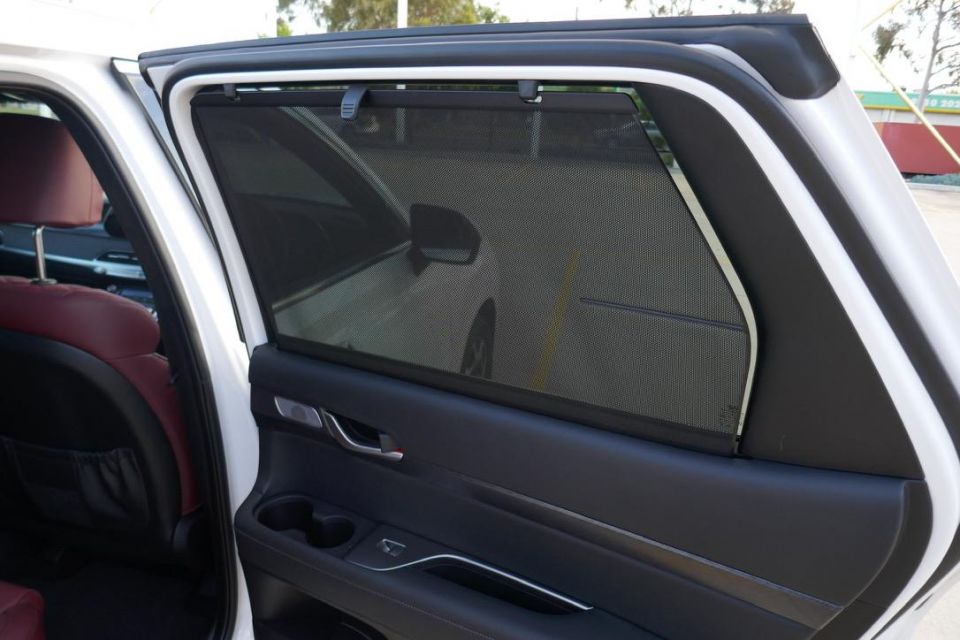
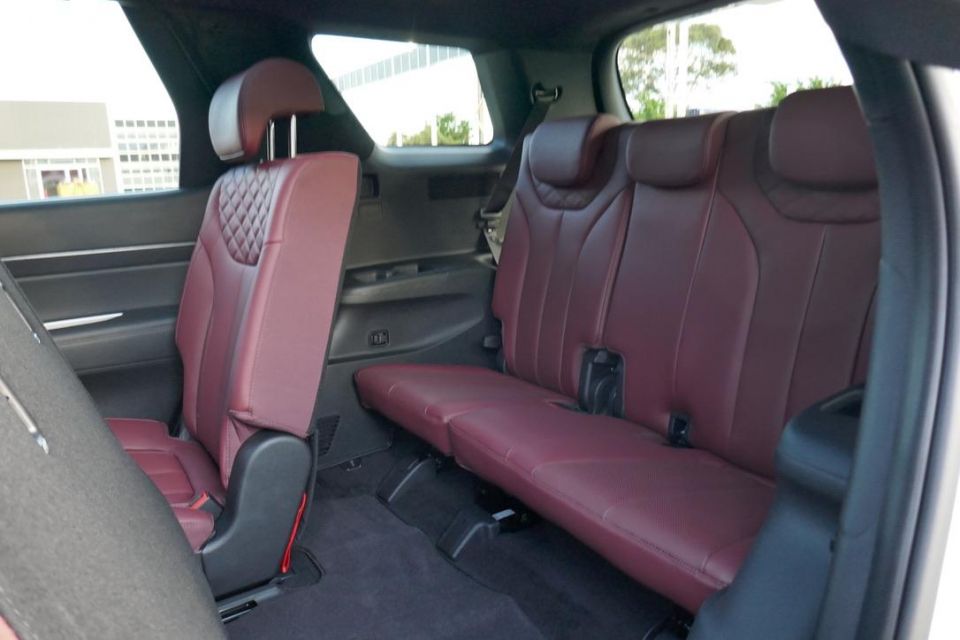
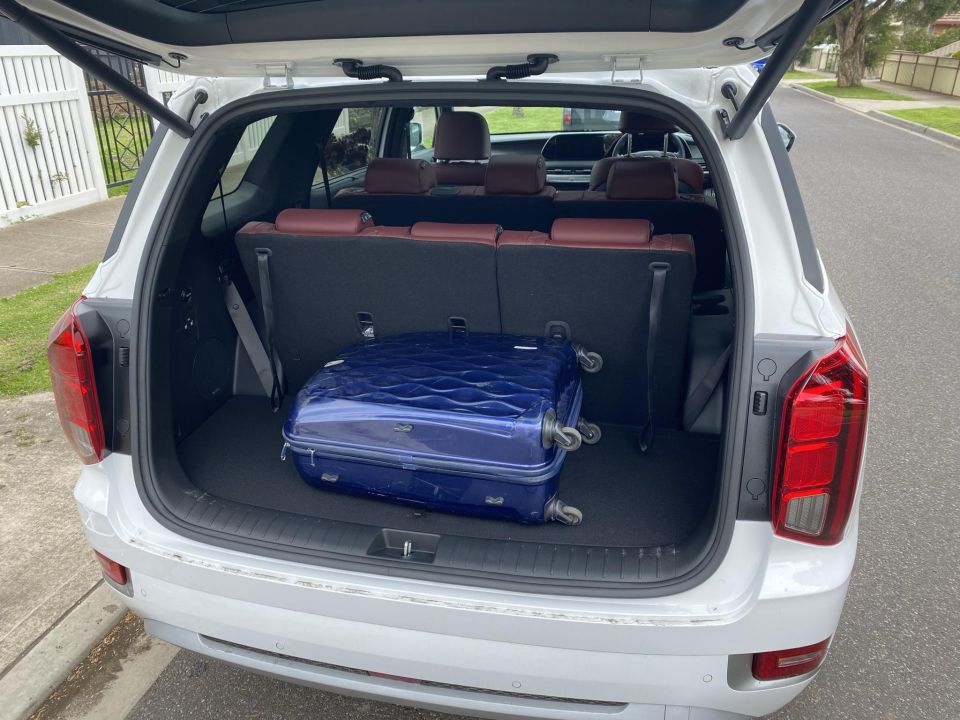
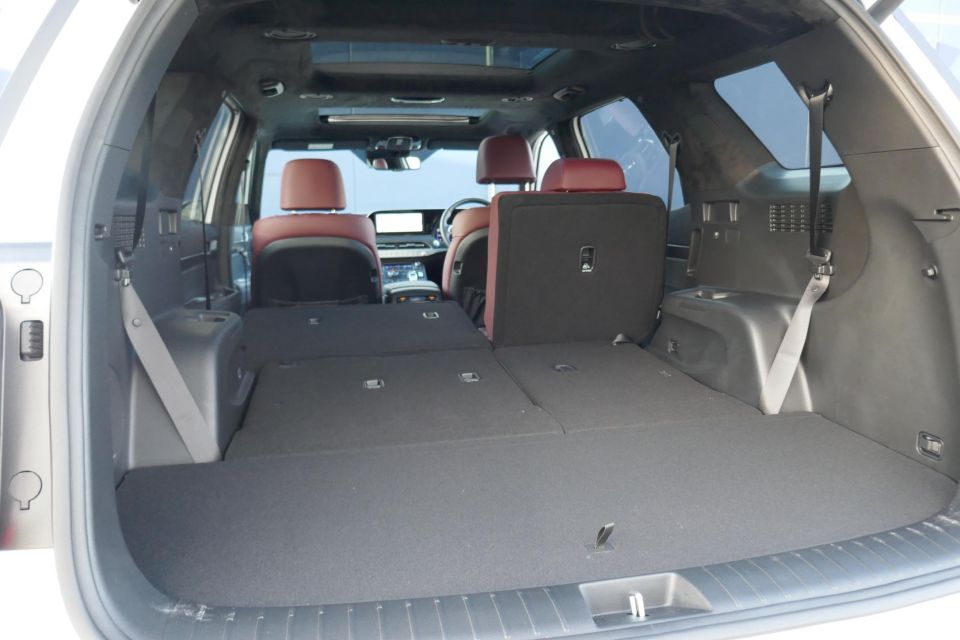
There’s still room for a few stacked suitcases atop one another behind the third row when deployed (at 311L it’s larger than a Corolla’s boot) which isn’t something all large SUVs offer. The jack and a quality retractable steel-frame sun blind live neatly below the loading floor.
With the third-row seat folded neatly into the floor there’s more than 700 litres, which is enough for 19 bags sized 30cm long x 20cm wide x 34cm tall, or enough room for four prams. This isn’t stacked to the roof, either. Fold the second-row flat and you have a windowed van.
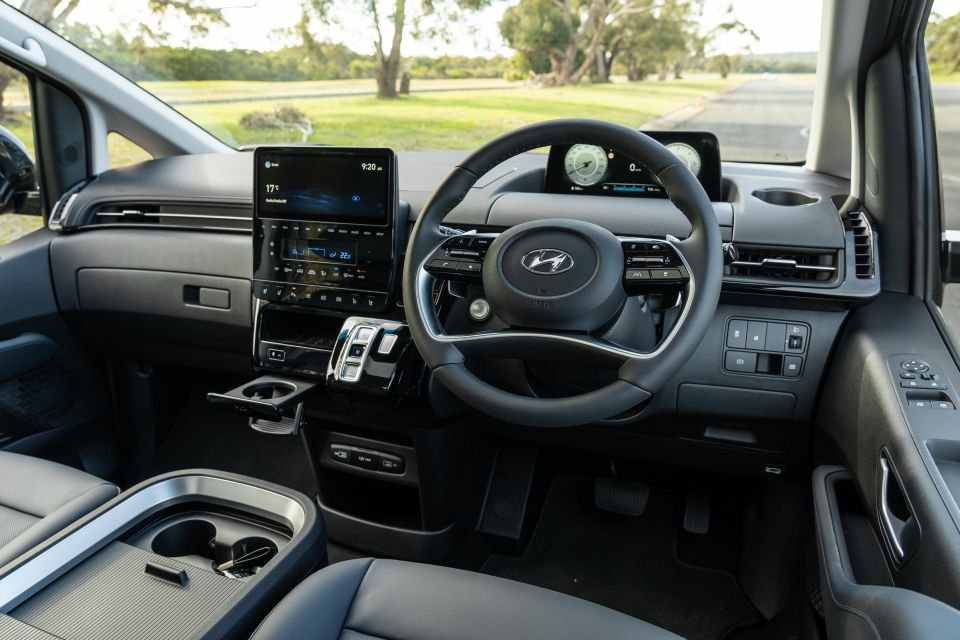
Staria
Actually, I take that last line back. This is a windowed van. You sit up tall and proud with more glass and subsequently more light on you than in any car this side of a Tesla Model X. The expansive dash and clear centre section enhance the feeling of space ever further.
It’s all well made and feels plush for something so reminiscent of a van, but it doesn’t come close to matching the Palisade for luxury finish and tactile surfaces. But perhaps you don’t want your army of kids scuffing your Nappa leather anyway…
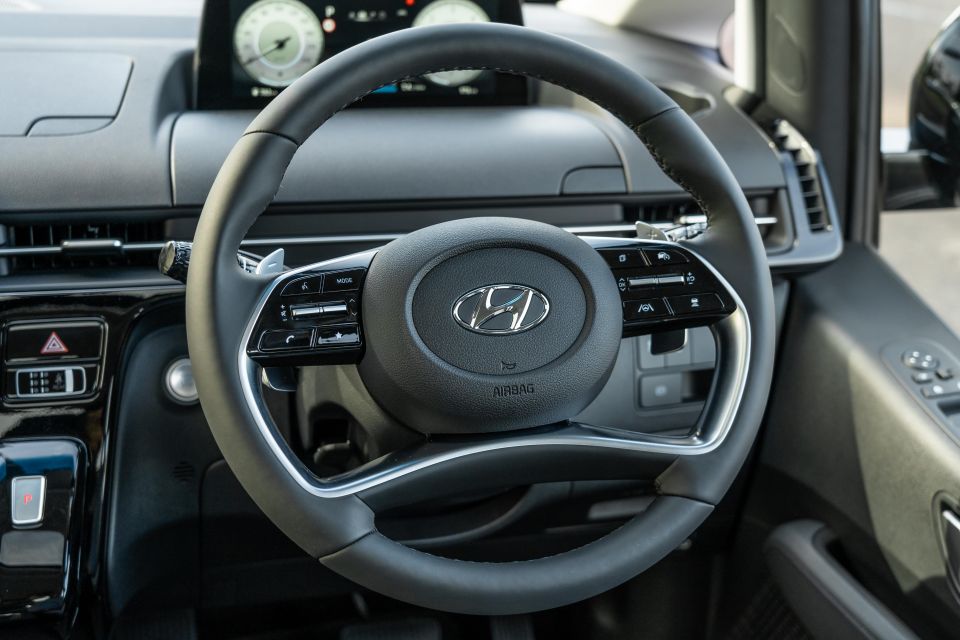
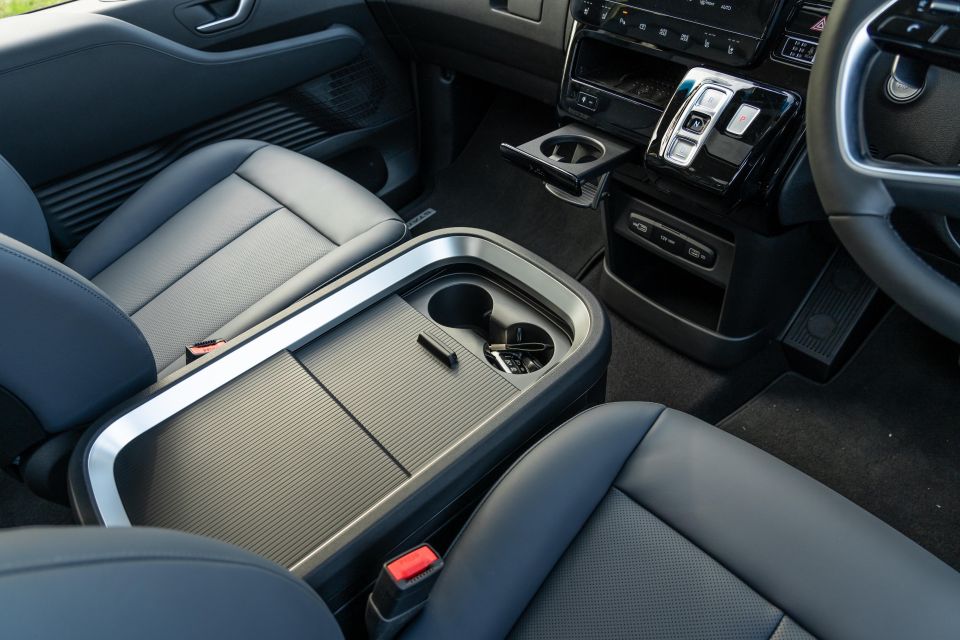
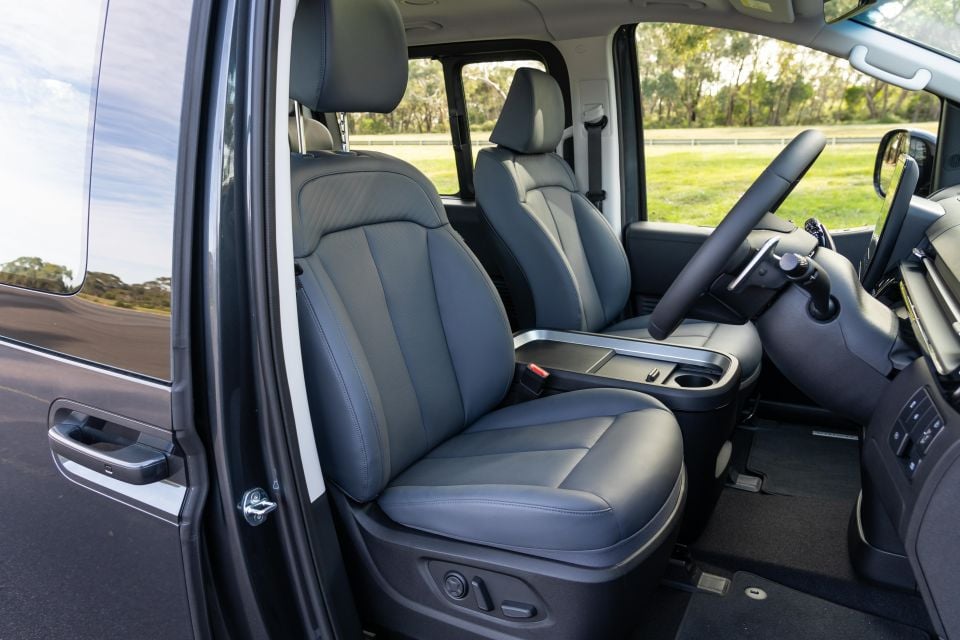
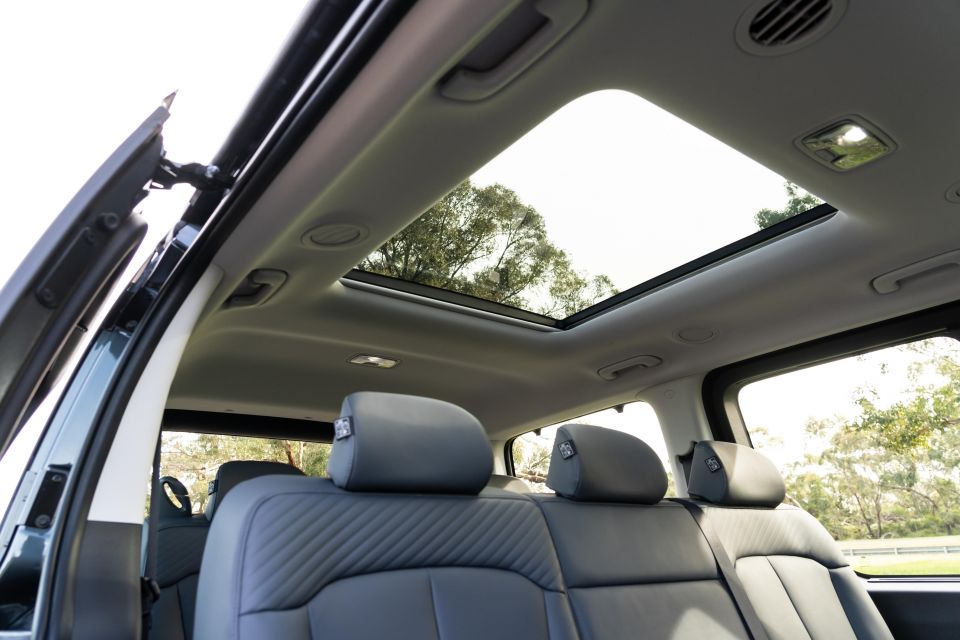
Where expert car reviews meet expert car buying – CarExpert gives you trusted advice, personalised service and real savings on your next new car.
You lack the Palisade’s head-up display but you get some swish digital instruments, which offer a slicker integration of the blind-spot cameras – you see the rear-side you’re indicating toward projected in the left or right ‘gauge’, rather than in a fixed centre TFT as per the Palisade.
The bulky centre console is only half as big as it looks, which is disappointing, and because the centre tunnel sits below your hip height unlike in the Palisade, you feel less bedded-down in the Staria – you sit ‘on’ it rather than ‘in’ it. But again, just look at those windows!
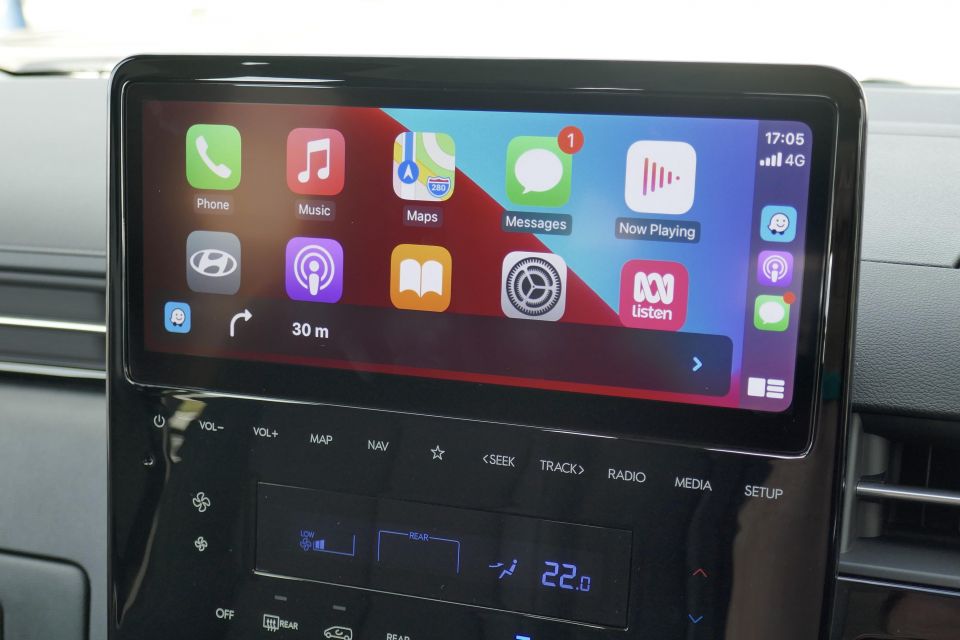
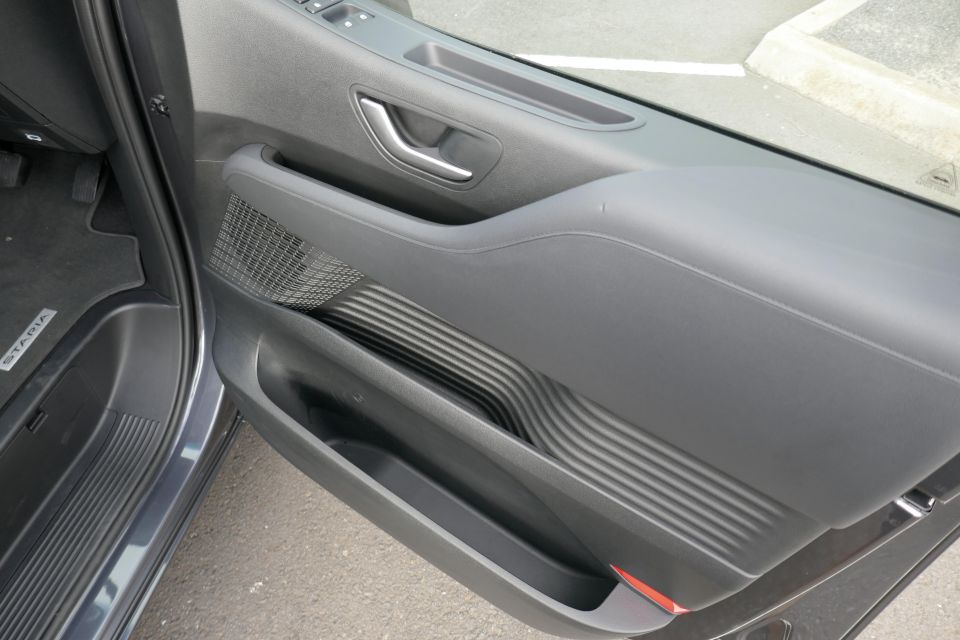

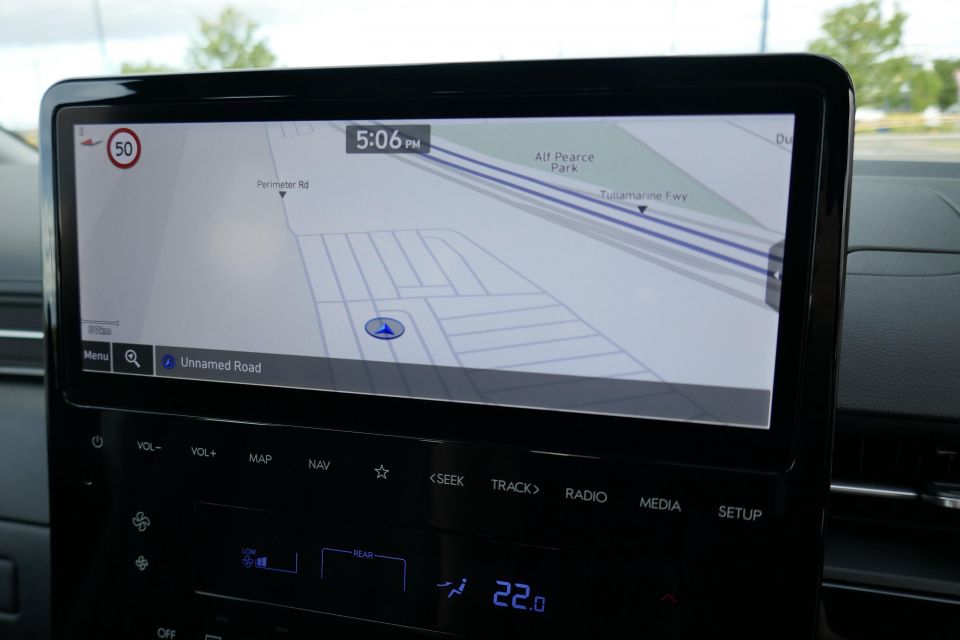
The infotainment is the same as in the Palisade, so see above. But it’s presented within a large piece of dust- and scratch-prone piano black plastic, while the lower touch points aren’t as intuitive or satisfying to use as the Palisade’s physical buttons and dials.
Check out the endless storage nooks above, in the form of closing cubbies along the dash. befitting its van-ish nature there are also heavily pocketed doors, and clever sliding cupholders scattered about. There’s also a screen view showing you the rear occupants.
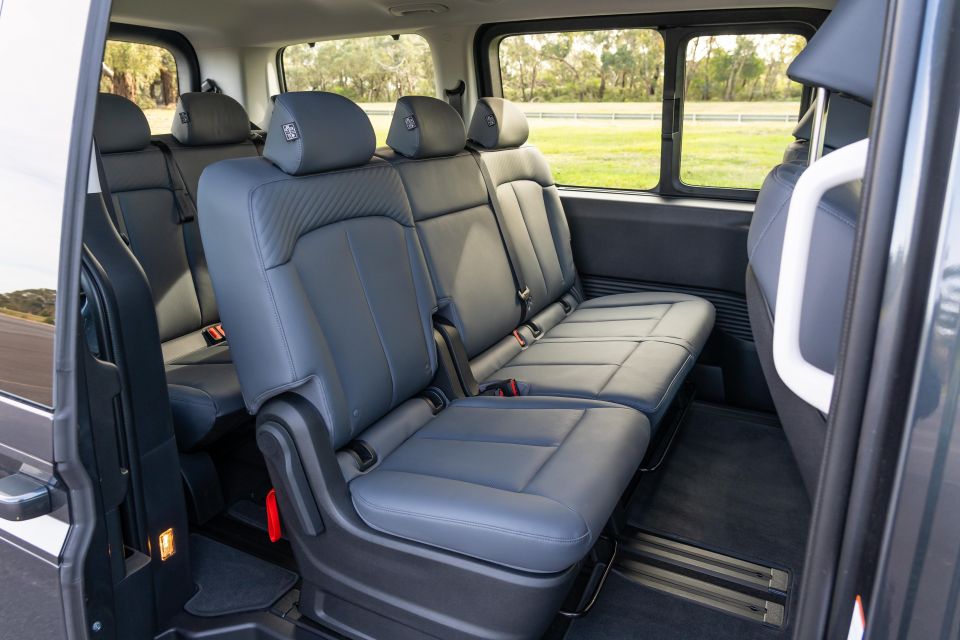
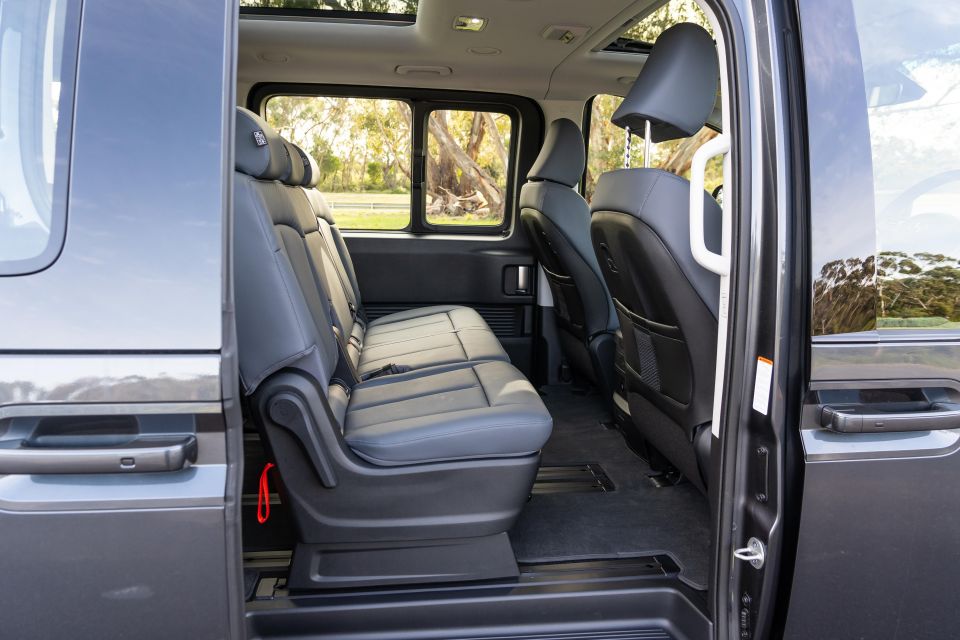
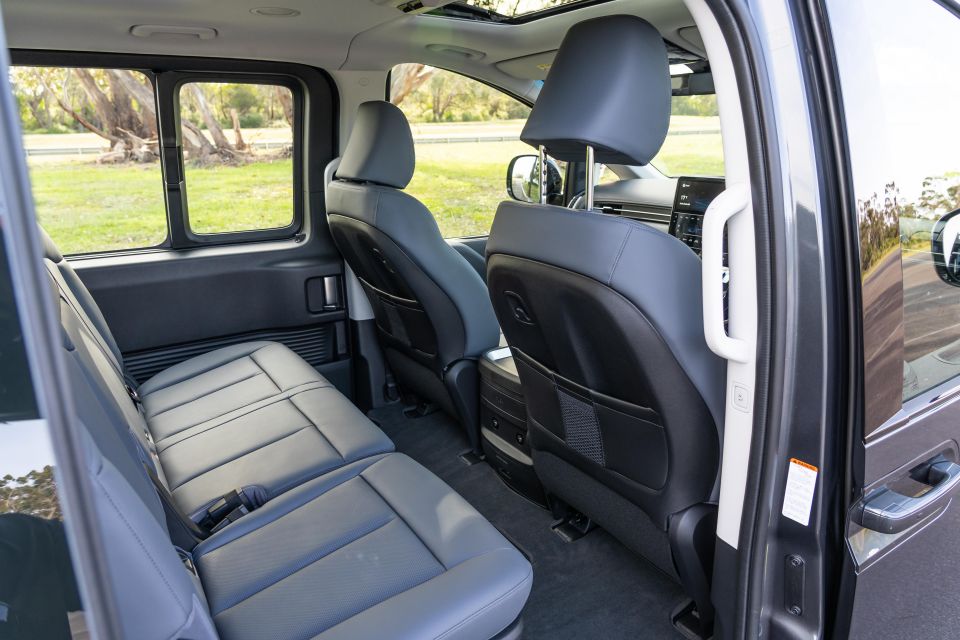
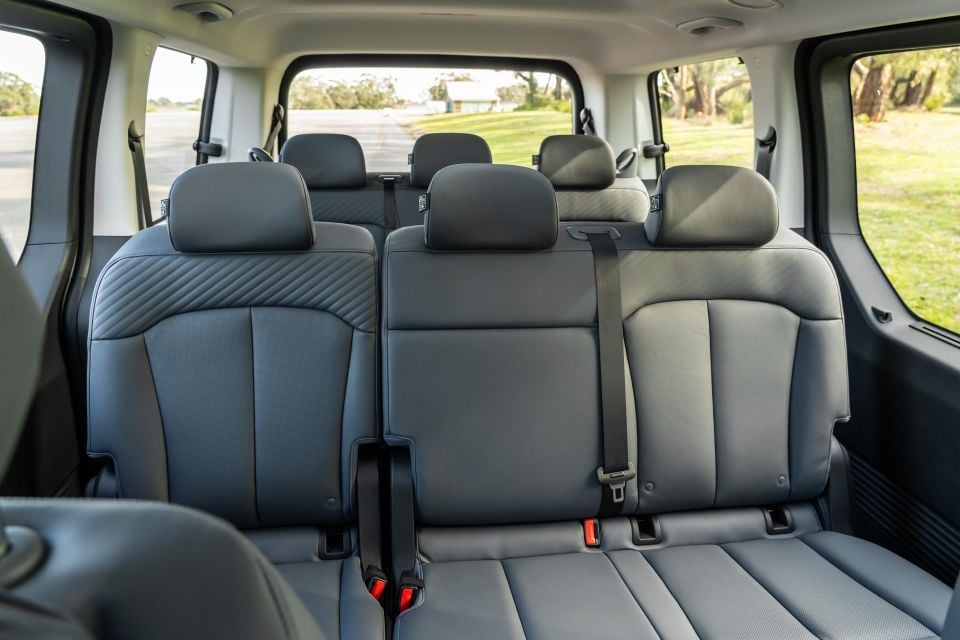
Party trick time. Buttons inside, handles outside, or a press of the key fob alike will all result in one or both powered side doors (with embedded and massive moveable windows) sliding open, presenting you with a vast split bench perched under a second sunroof.
Obviously, headroom is on another level over the Palisade, as is ease of outboard-vision. The sliding and tilting bench is a bit flat and unsupportive against the huggier Palisade. There are also rooftop air controls and vents, USB points, bag hooks, and a pull-out drawer.


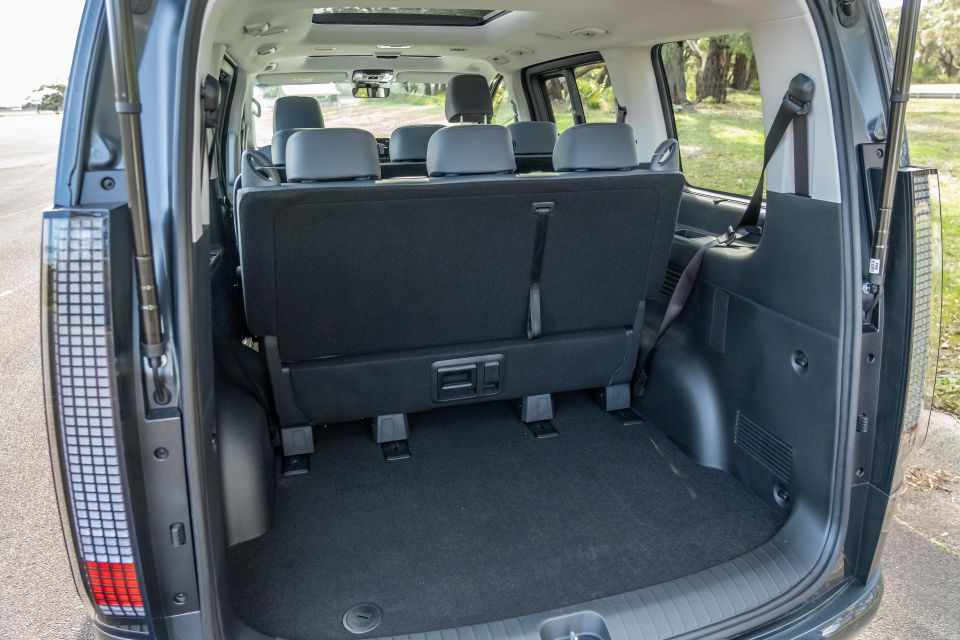
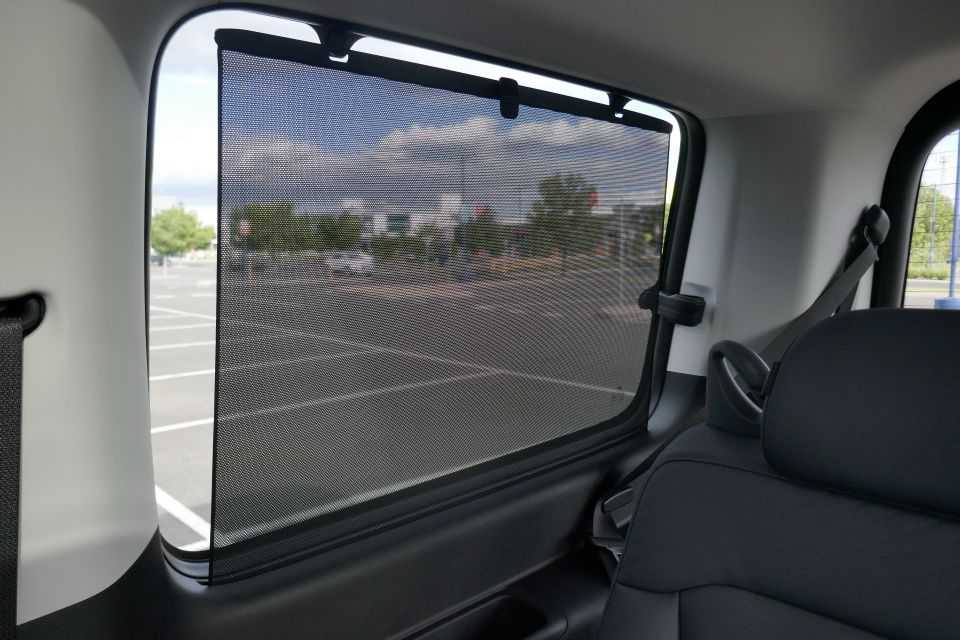
A tug of a strap slides the centre bench piece out of the way, to the point where you can pretty easily walk into the third row, which has windows that open a crack, USBs, cupholders, blinds, vents, and offers all the space anyone could want. There’s room for eight adults.
The back bench folds half out of the way and slides forwards, though it’s not as flexible and clever as it could be. Still, if you need a bigger boot than this, you’re going to need to consider getting hold of a covered trailer. Be aware the rear tailgate is quite bulky, by the way.
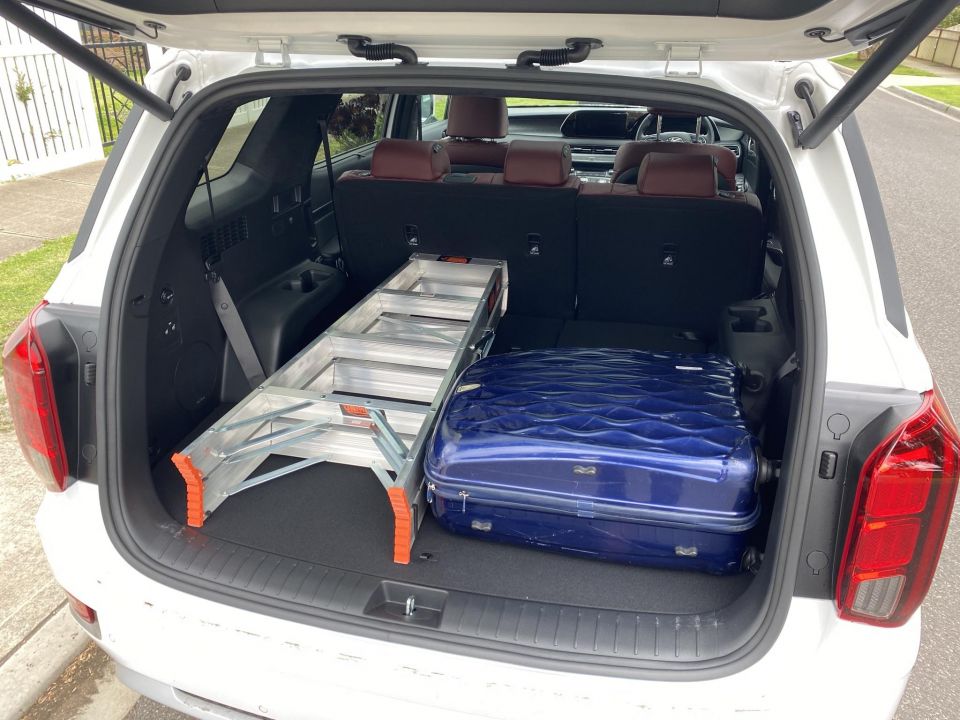
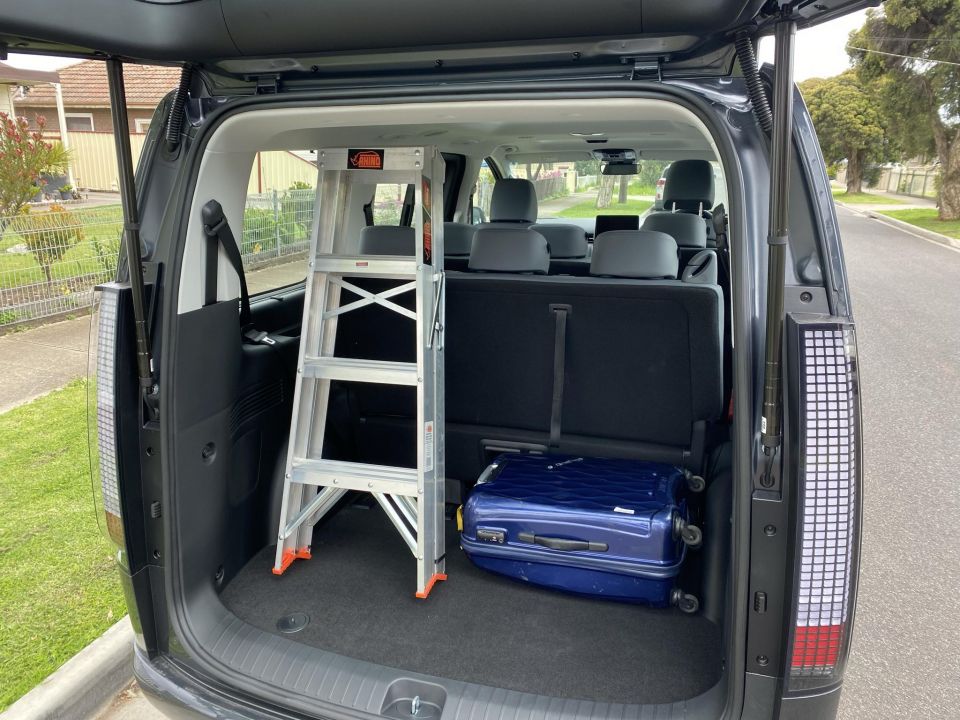
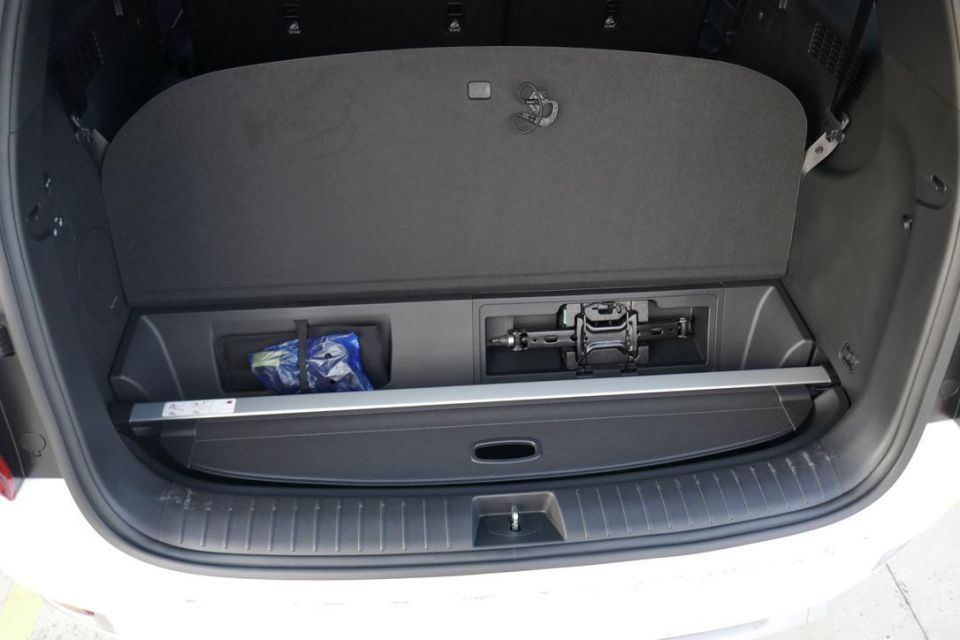
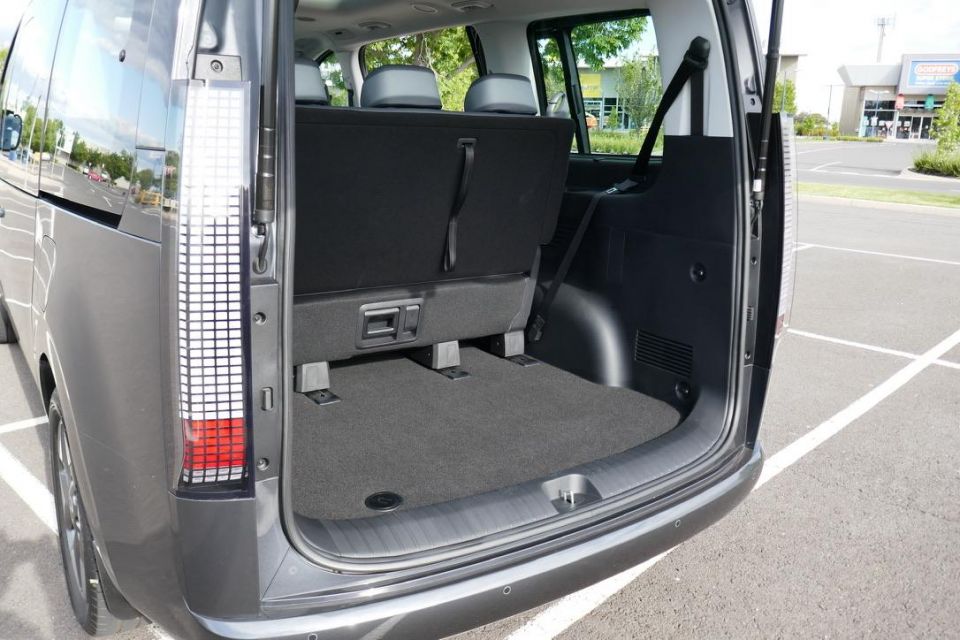
| Palisade | Staria | |
|---|---|---|
| Length | 4980mm | 5253mm |
| Width | 1975mm | 1997mm |
| Height | 1750mm | 1990mm |
| Wheelbase | 2900mm | 3273mm |
| Clearance | 203mm | 186mm |
| Boot behind 2nd row | 704L | 1303L |
| Boot behind 3rd row | 311L | 831L |
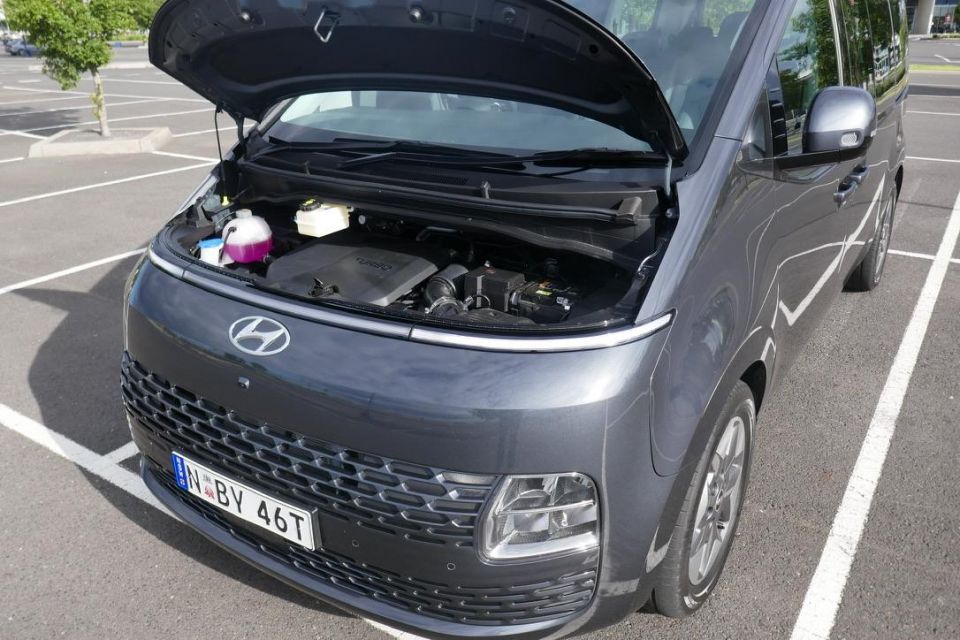
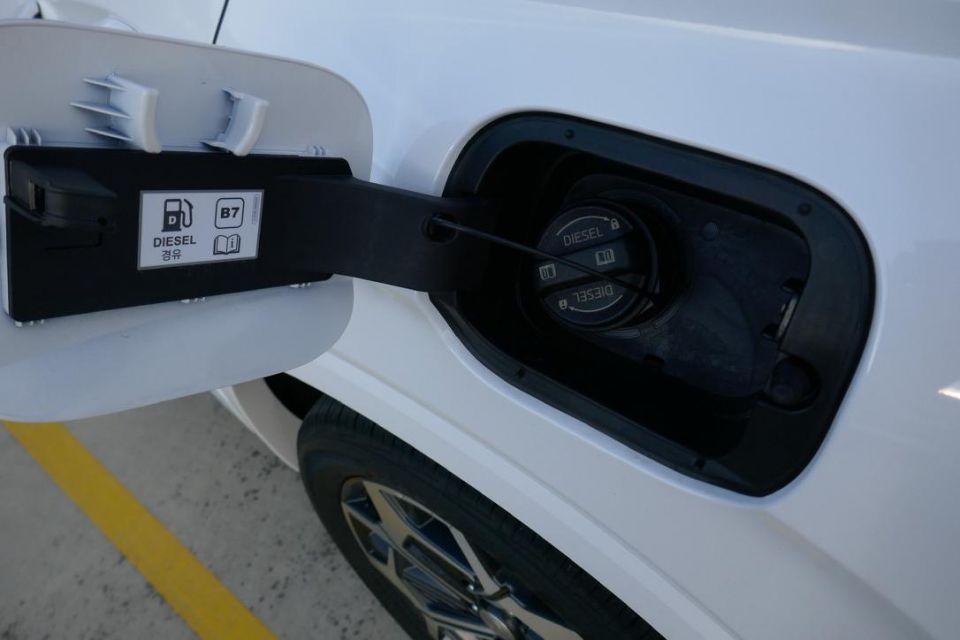
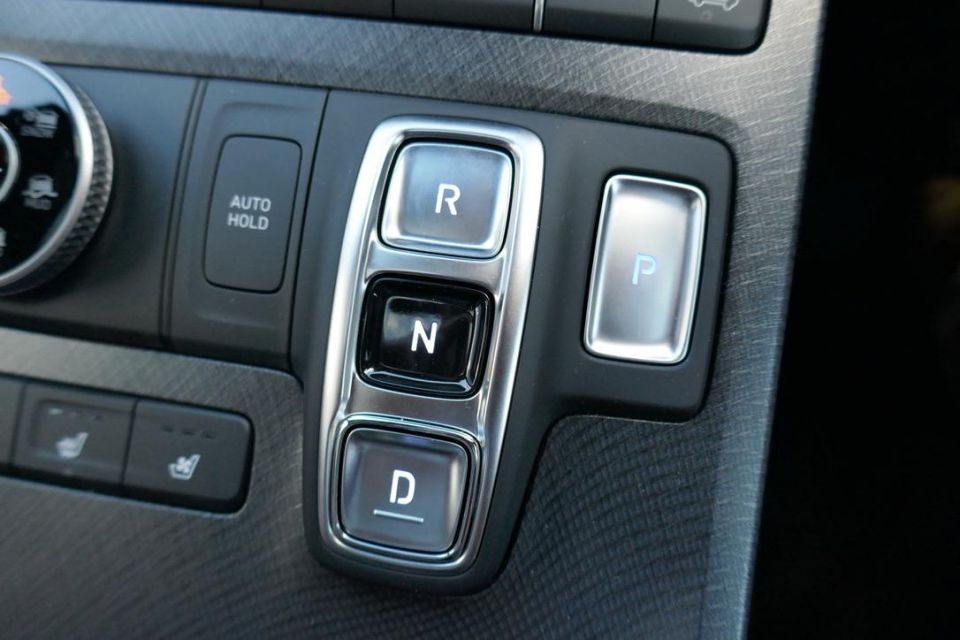
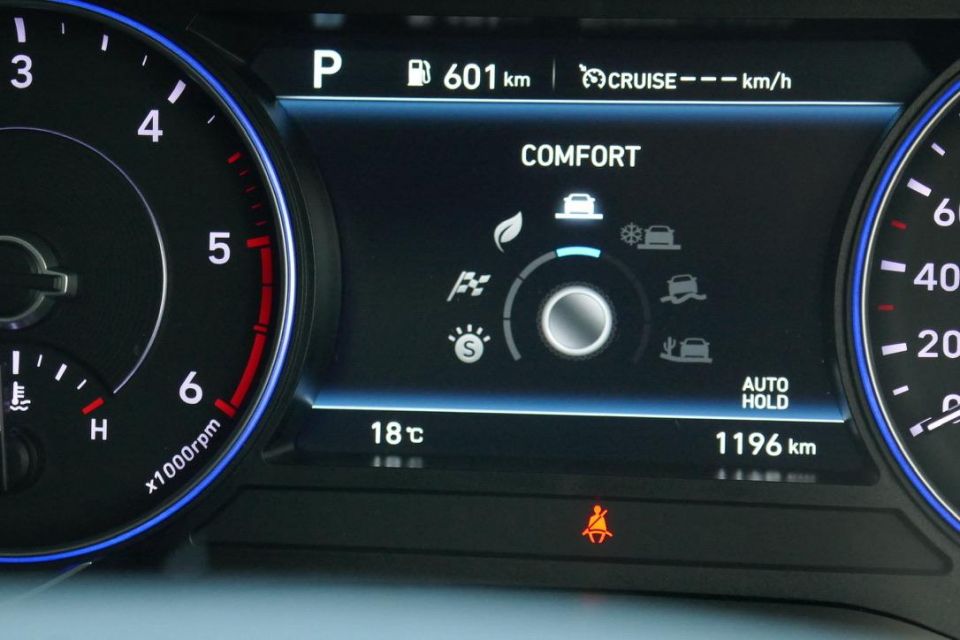
Each vehicle comes with two drivetrain choices: a four-cylinder diesel with all-wheel drive or a petrol V6 with front-wheel drive. Both here come with the more expensive but also more efficient and higher-torque diesel.
In both vehicles it’s a 2.2-litre turbocharged unit, but they make different outputs on account of tune. The Palisade has 147kW of power and 440Nm of torque whereas the Staria’s makes 130kW and 430Nm. Both are certified Euro 5 emissions compliant, not Euro 6.
Both use an eight-speed automatic and on-demand ‘HTRAC’ AWD system with centre locking function and individual wheel braking. Both also have various drive modes from Eco to Sport that adjust throttle mapping and gearing, plus a Smart setting that leaves it to the car to decide.
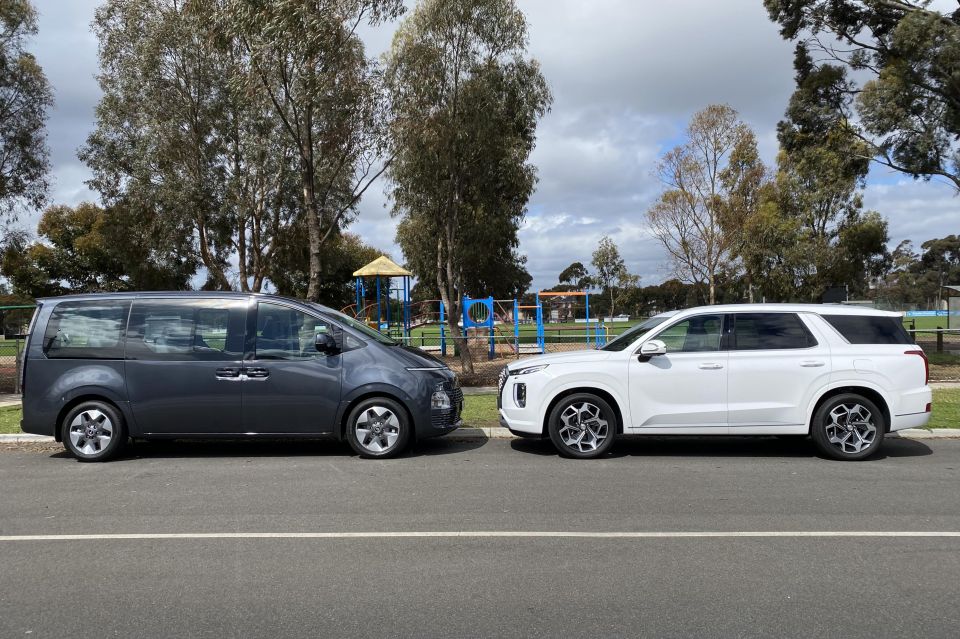
Comparative fuel economy shows the Palisade (ADR combined-cycle) uses 12 per cent less diesel at 7.3L/100km. In urban stop/start driving the Palisade is 13 per cent better. The Staria’s 75-litre tank is 4 litres greater than the Palisade’s, however.
The Palisade is also the lighter vehicle at 2018kg (tare) versus 2271kg for the Staria, meaning the SUV is more powerful, efficient, and faster off the mark than the people-mover – with a 0-100km/h average of 9.5 seconds versus 11.5 seconds.
Neither of these blow you away with their straight-line speed.
In terms of towing, the Staria has a braked-trailer rating of 2500kg – 300kg greater than the Palisade’s cap. Hyundai charges extra for its tow accessory kit.
| Palisade | Staria | |
|---|---|---|
| Engine | 2.2 4-cyl diesel | 2.2 4-cyl diesel |
| Power | 147kW @ 3800rpm | 130kW @ 3800rpm |
| Torque | 440Nm @ 1750rpm | 430Nm @ 1500rpm |
| Power-to-weight | 75.7kW/tonne | 57.2kW/tonne |
| Transmission | 8-speed auto | 8-speed auto |
| Drive system | Active AWD | Active AWD |
| Maximum towing | 2200kg | 2500kg |
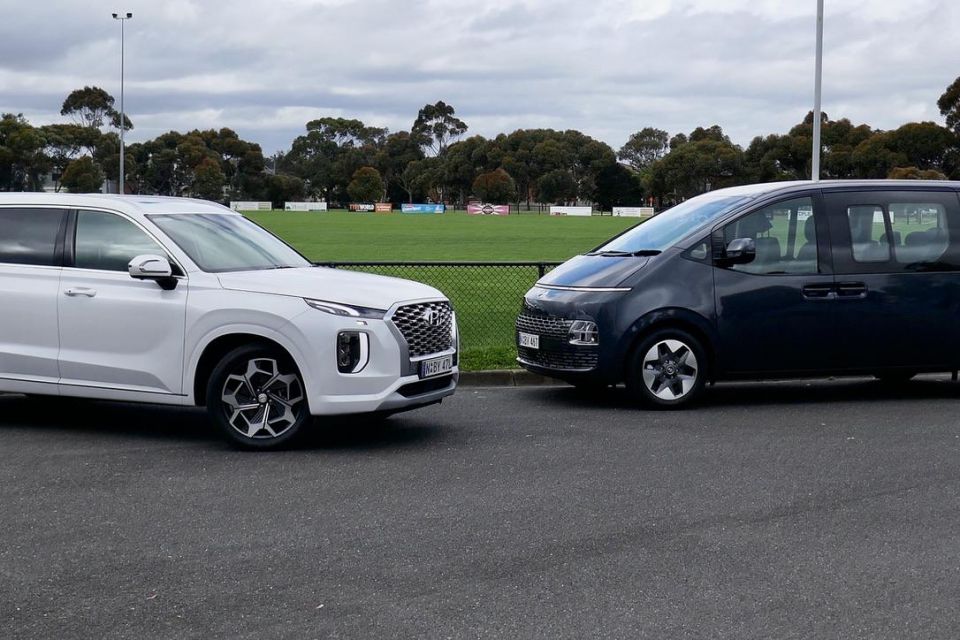
Interestingly neither of this pair have Australia-specific suspension calibration, but Hyundai says its global engineers are catering more to our market’s needs from the get-go.
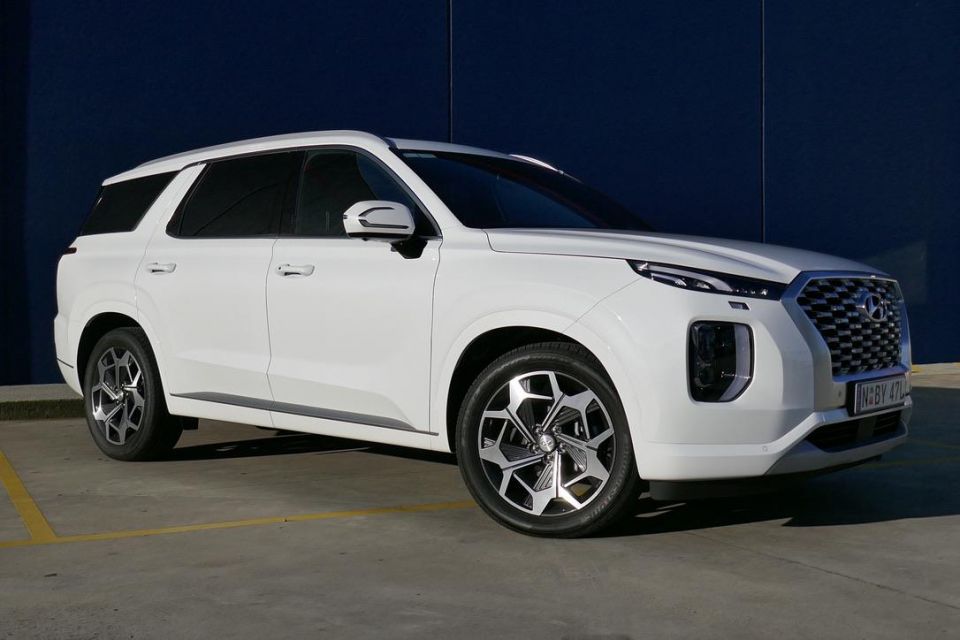
Palisade
The Palisade’s diesel engine offers brisker performance than its application in the Staria on account of its higher power-to-weight ratio, which suits the more conventional (though still-commanding) seating position.
The eight-speed auto is generally unobtrusive and happy to ride the torque band, and the engine sounds more refined at idle – and if you’re really mashing the throttle. More deadening.
The HTRAC AWD system is always active, and you can watch the torque allocations on a cool diagram in the dash.
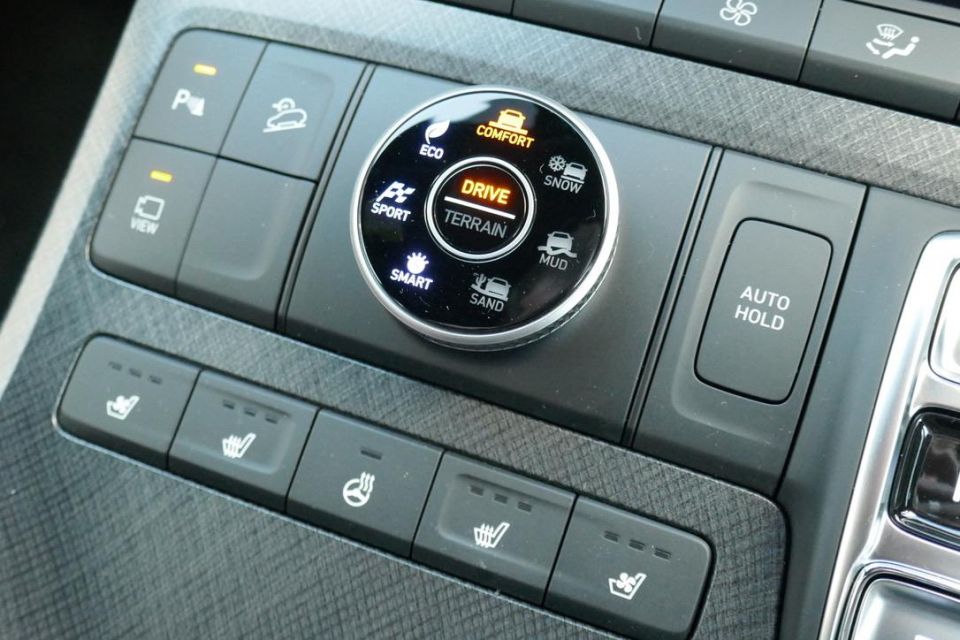
Befitting its SUV nature, the Palisade comes with more soft-road abilities – though this isn’t a Toyota Prado – including a Multi-Terrain Control system that changes the stability control parameters and throttle control to negotiate various slippery surface types.
This, plus the extra clearance and shorter wheelbase, make this the only choice for mild soft-roading.
On the road it feels more immediately responsive to steering inputs, and stays flatter against cornering forces. It feels tight, solid and responsive, and the steering resistance comes with a good spectrum of choice.
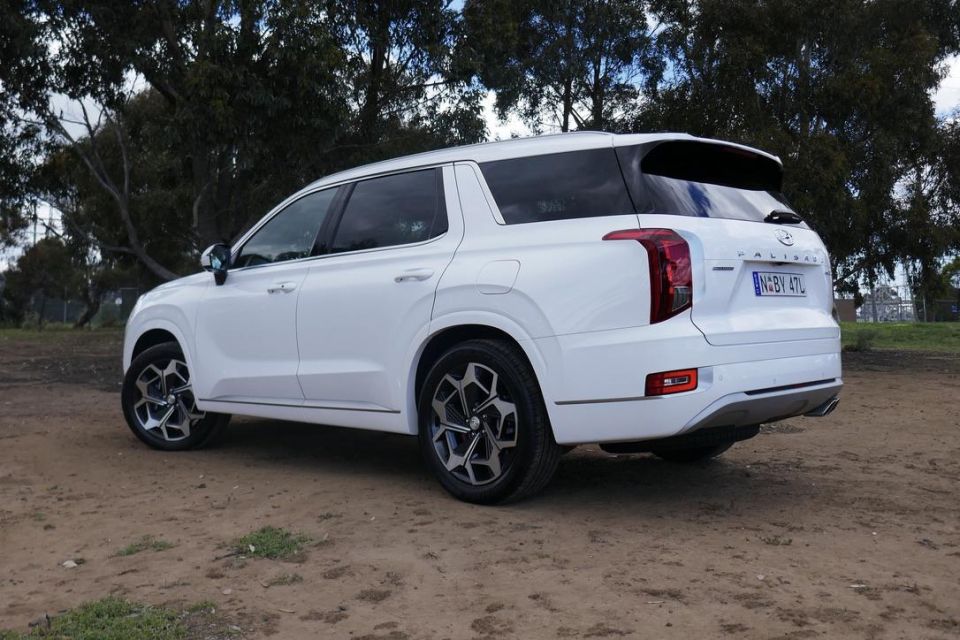
The fixed dampers are nothing flash like active ones or air springs, and the 20-inch wheels are pretty brash, yet the ride quality is impressive even over typical backroads, and the suspension is great at catching the vehicle on rebound while absorbing impact on compression.
Just keep in mind, while the Palisade is a 5.0-metre long diesel SUV, it’s built for family road trips and towing a boat or something, not going rock-hopping and lugging huge loads. It’s not an Everest, MU-X or Prado.

Staria
The 2.2 diesel doesn’t shift the Staria as quickly as it does the Palisade. Forward progress is acceptable but never brisk, and that’s before you load it up. The transmission is relatively unobtrusive, kicking down swiftly and finding tall gears to conserve fuel.
The various drive modes are fiddly to toggle between, and while the Sport setting does add some steering resistance and sharpens the throttle tune, it doesn’t really change the Staria’s overall feel – this is a tall, heavy, often stately machine.

Having AWD is an excellent addition, even if you only find yourself on a boggy footy oval or heading to the snow a few times per year. Hyundai’s rivals do not offer this feature, either.
Over choppier road surfaces it remains fairly compliant, certainly not particularly van-like, and while you feel its mass over sharp road hits the smaller wheels with more tyre sidewall remove the worst of them.
It actually feels more agile than you’d probably expect, with predictable responses to your steering and braking inputs. Sure it rolls a little through corners, but the springs keep things controlled, and the steering responsive from centre.
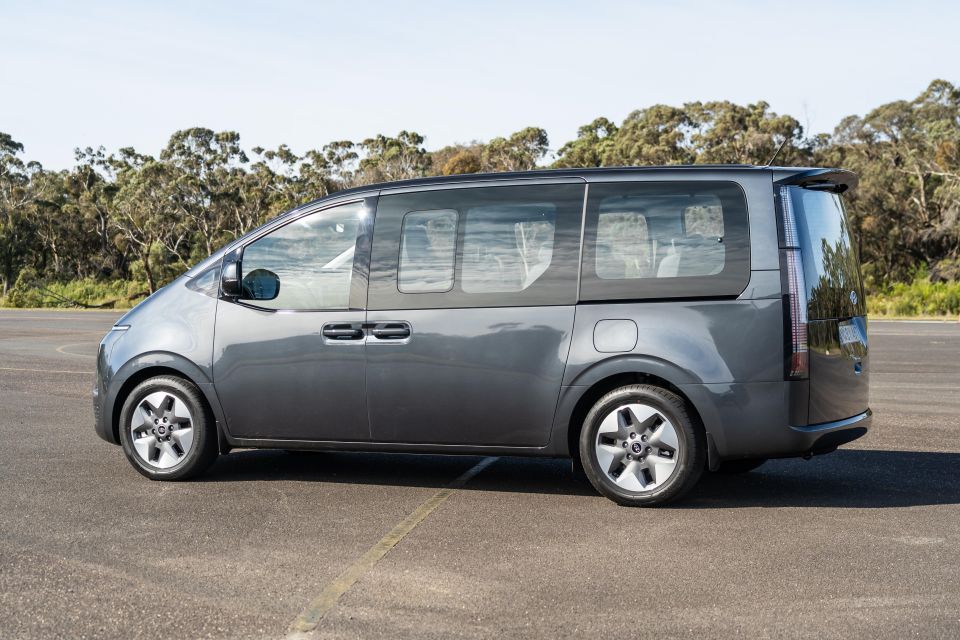
Still, driven with some aggression, it doesn’t feel as assured or confidence-inspiring as the lower, smaller and tighter Palisade.
In urban driving its light steering and huge windows come to the fore, though its turning circle is about 15-20cm larger.
In terms of NVH, the diesel is a little more intrusive in the Staria while over coarse chip surfaces it lets in a little more tyre noise, with the decibel test differential hovering between 1-3dB. The Staria isn’t a rattly, crashy van, but the Palisade certainly cossets you better.
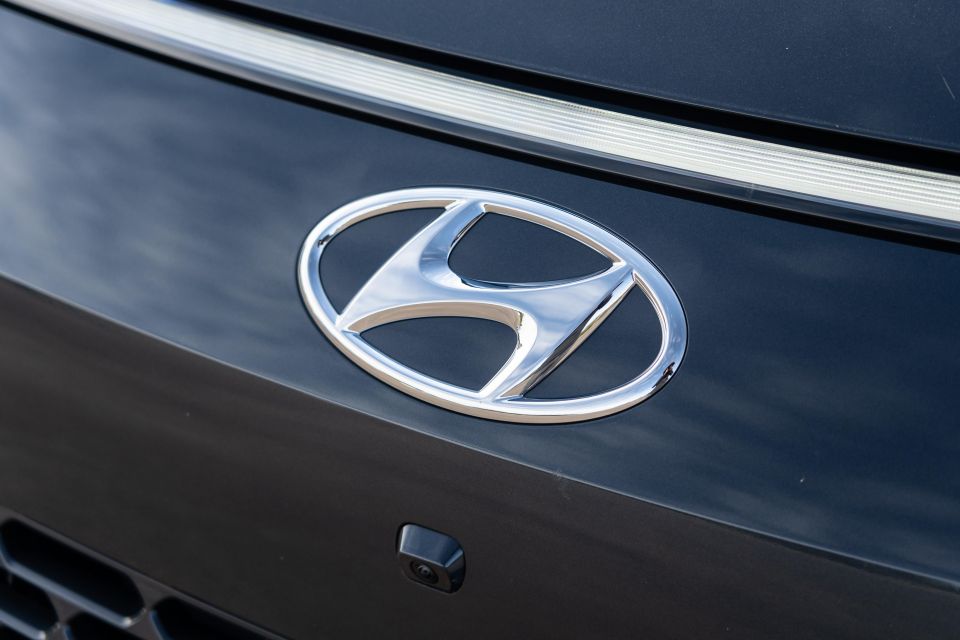
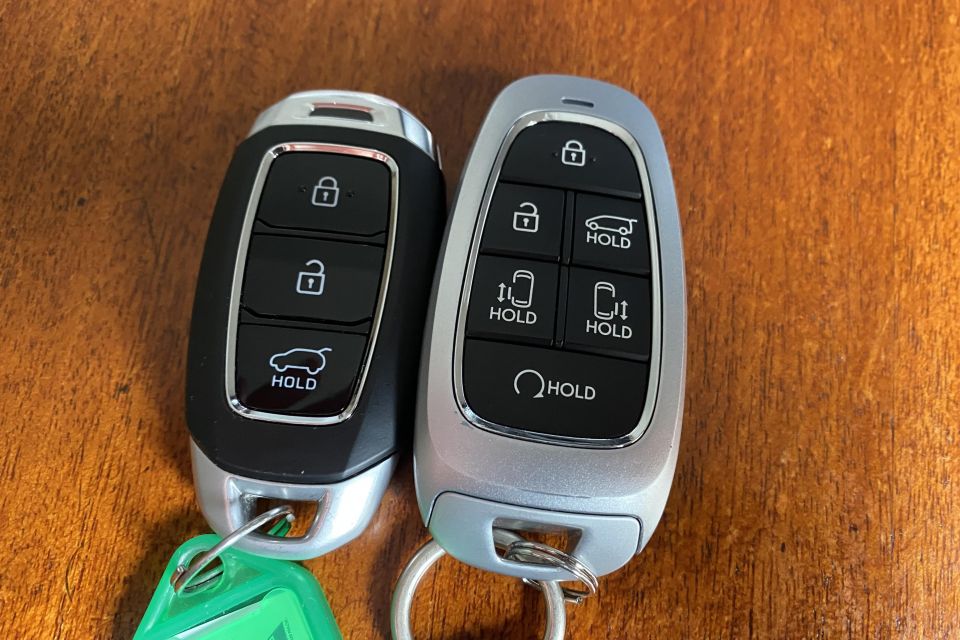
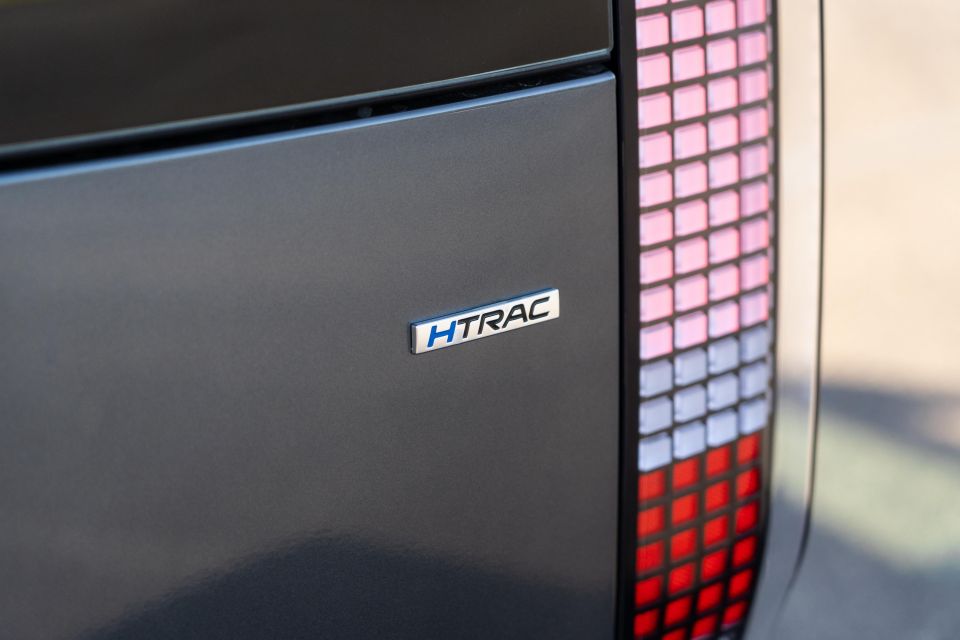
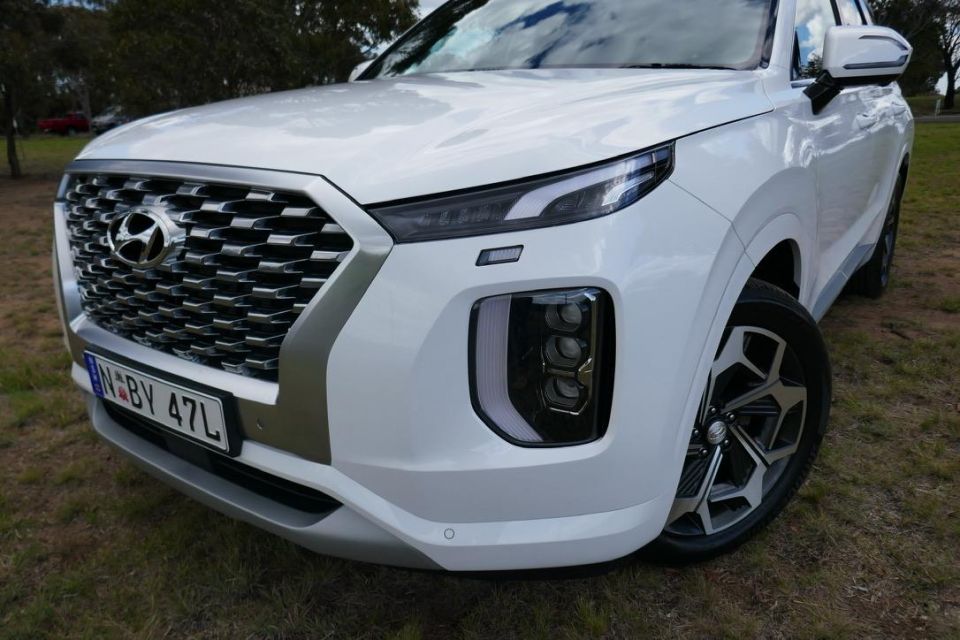
Hyundais come with a five-year warranty with no distance limit.
Both the Palisade and Staria have 12 month or 15,000km servicing intervals.
Five years or 75,000km worth of servicing at current prices should cost you $2345 at an average of $469 per visit in the Palisade, and $1800 for the Staria ($360 per visit).

That was a fun little test. The Palisade really does impress as a road-focused large SUV. It’s quieter, quicker, plusher, rides and handles better, and is more adventure-ready than the Staria. For most families it’s the better (and more baby-friendly) choice.
Not to mention its more urban-friendly dimensions – relatively speaking!
That being said the Staria offers more metal for less money, and for those regularly ferrying around more than five adults will offer a more comfortable experience. Importantly, alongside the related Kia Carnival, it makes the humble MPV a bit cool again.
There are endless large SUVs to choose from led by the Toyota Kluger and Mazda CX-9. One contender that uses the same mechanical setup as either Hyundai here, and blurs the lines between the pair, is the Kia Carnival that’s video-reviewed below.
Share your thoughts with us in the comments below!
Share your thoughts and write a review of a car you own and get featured on CarExpert.


Max Davies
3 Hours Ago


William Stopford
19 Hours Ago


Ben Zachariah
20 Hours Ago


Derek Fung
21 Hours Ago


Matt Campbell
1 Day Ago


William Stopford
2 Days Ago